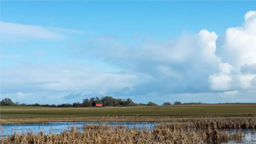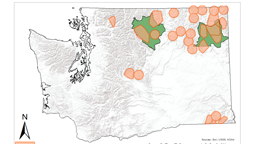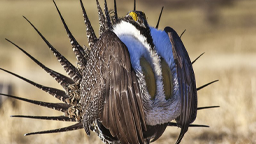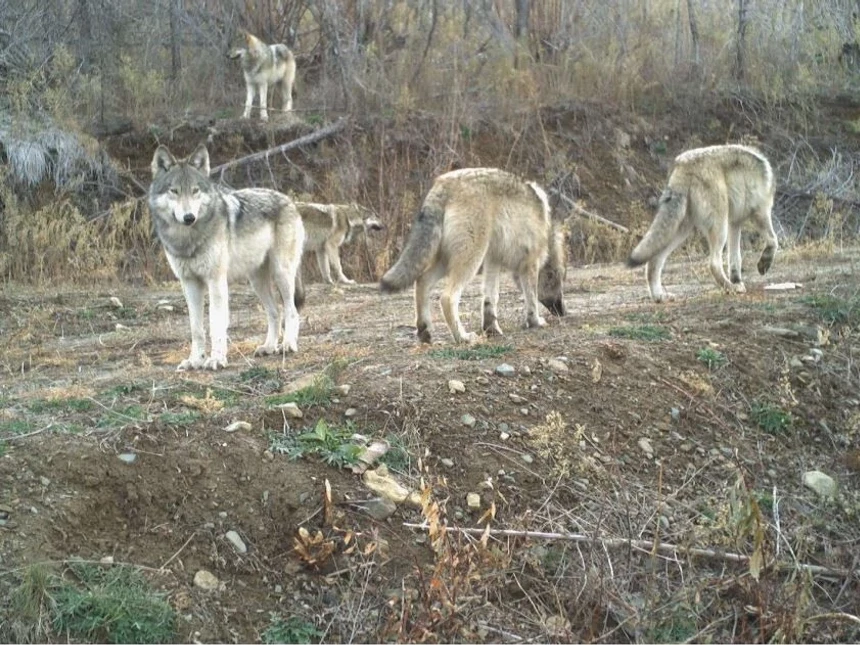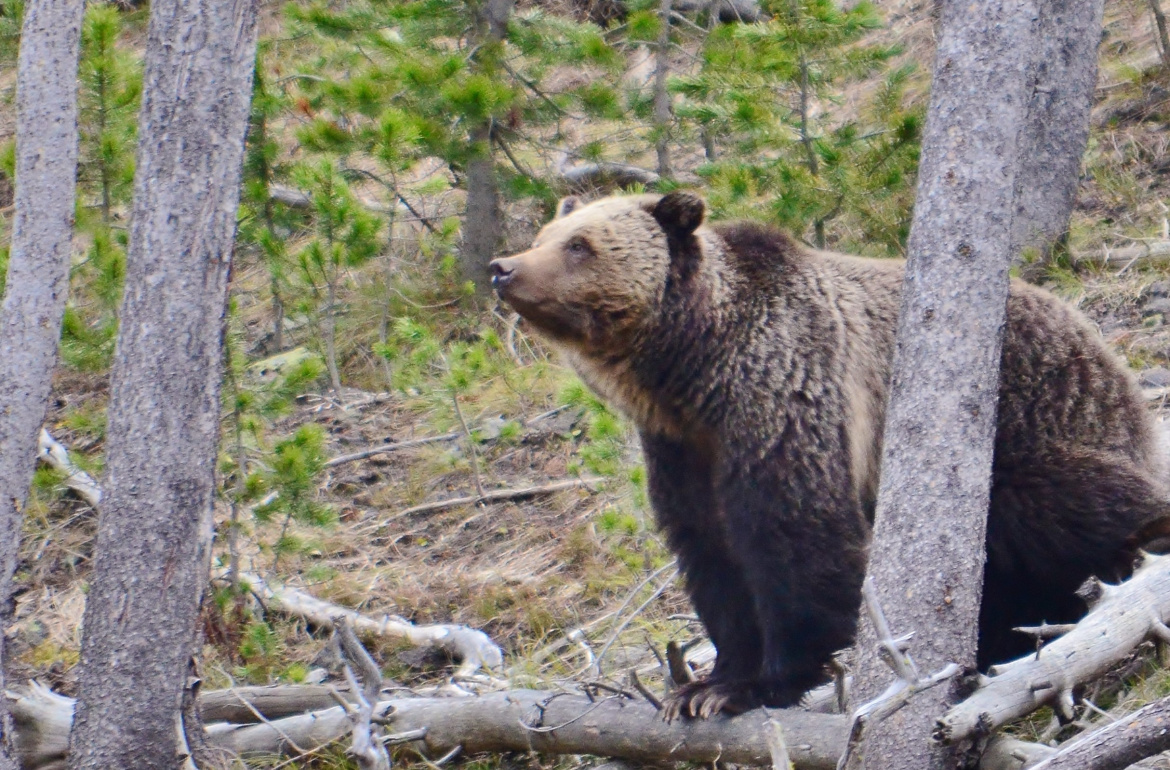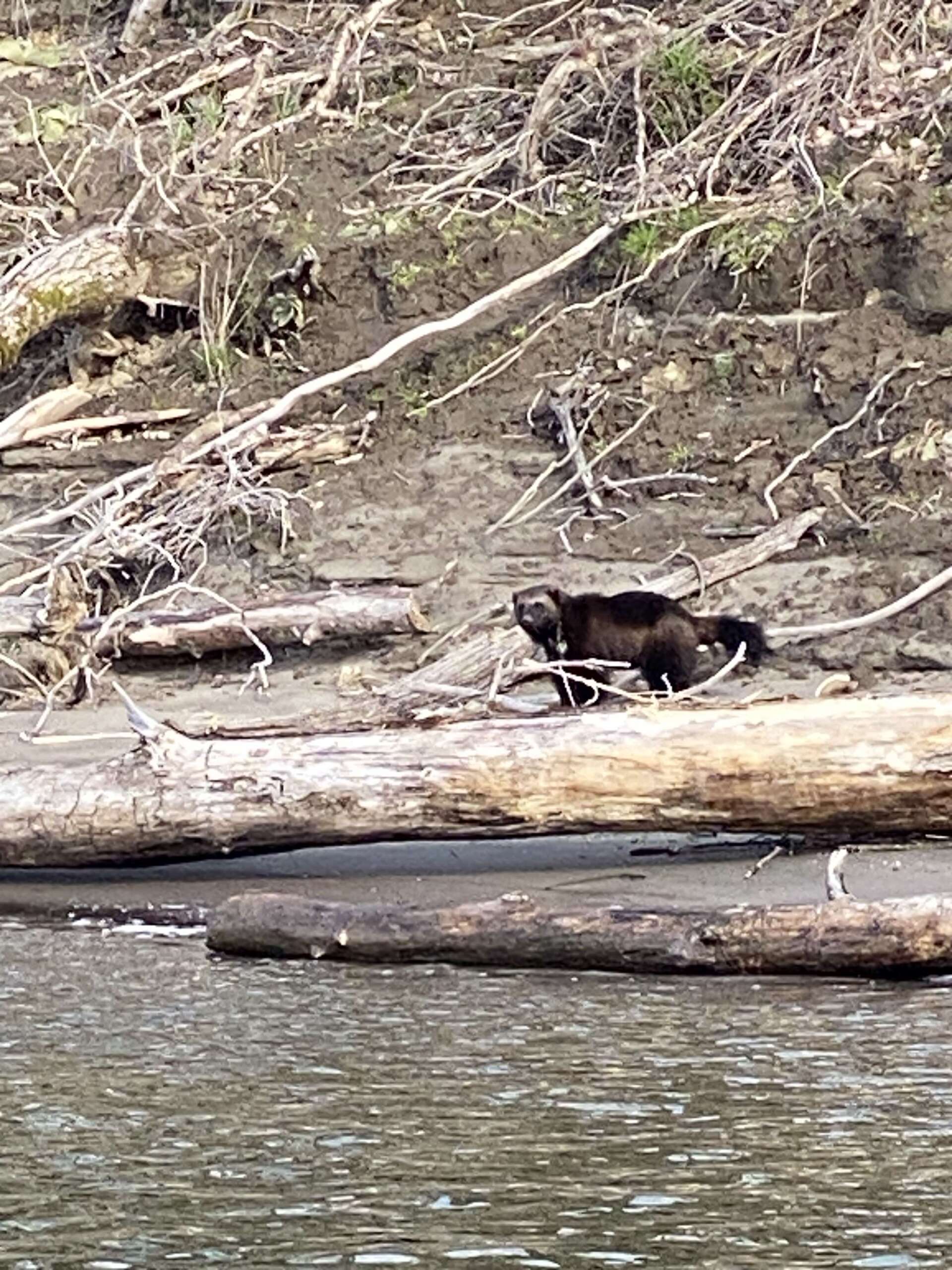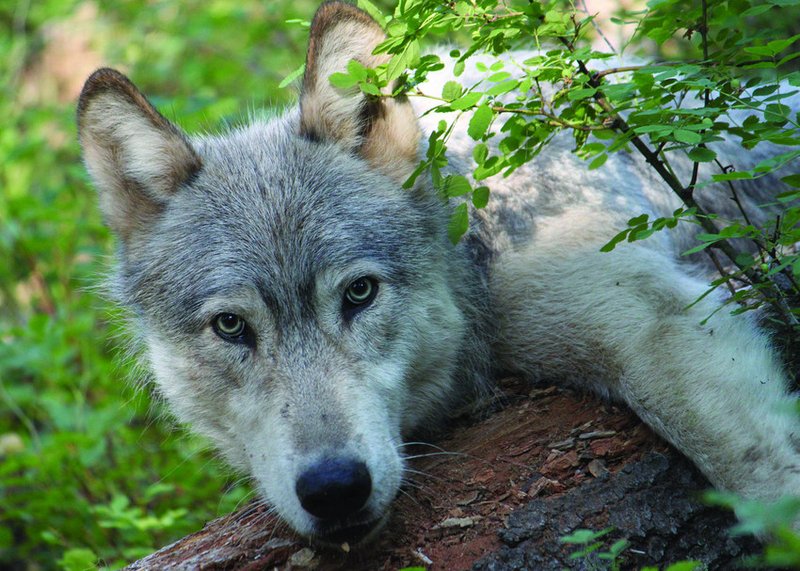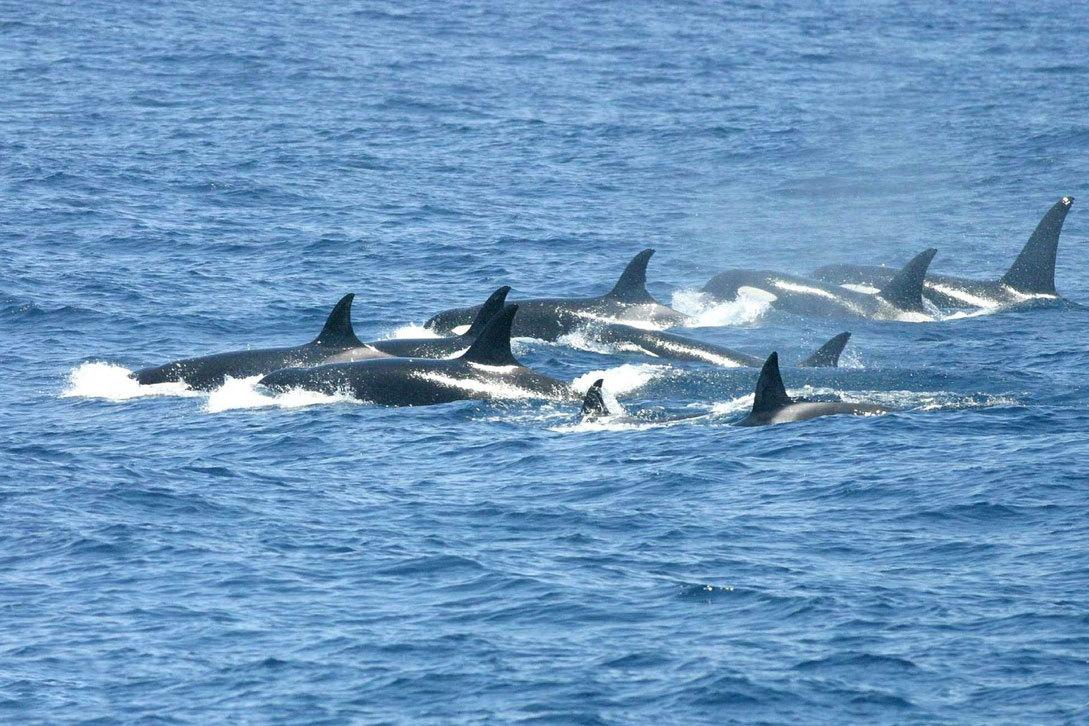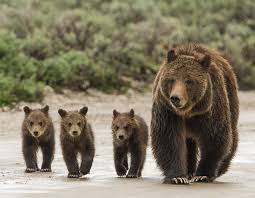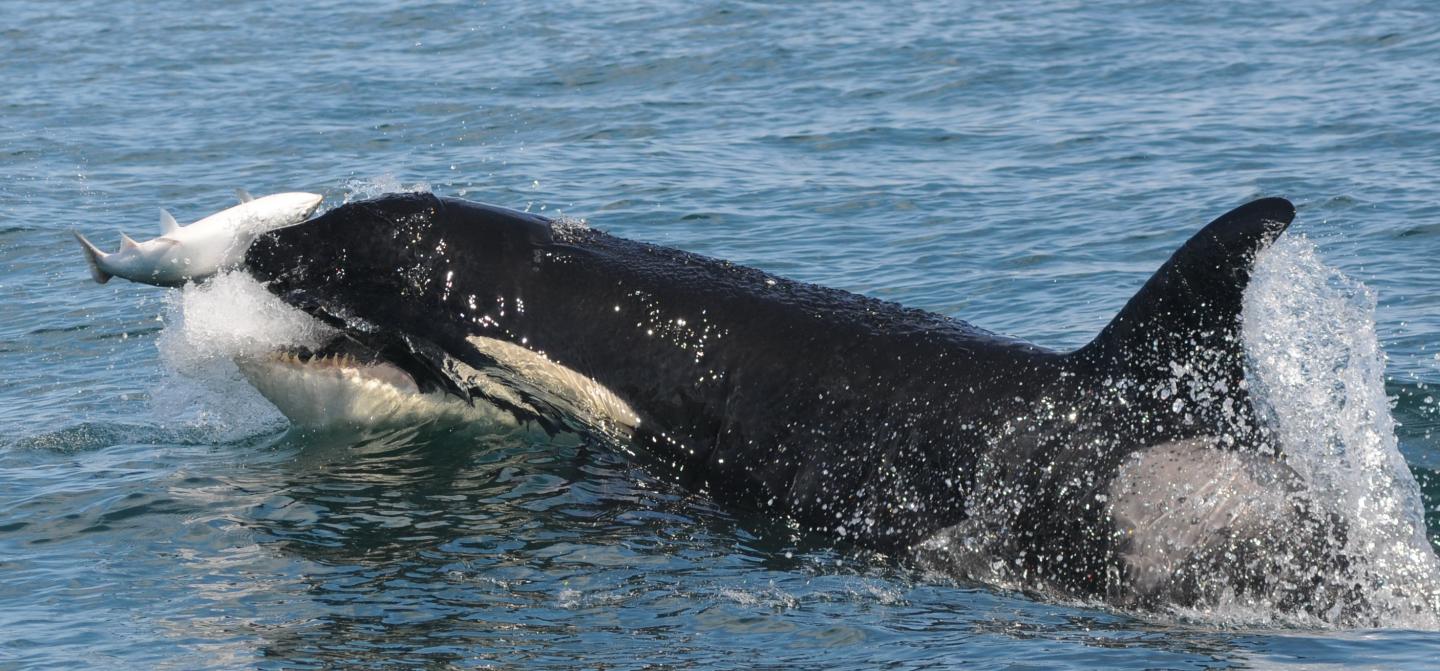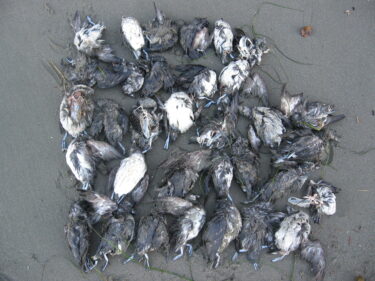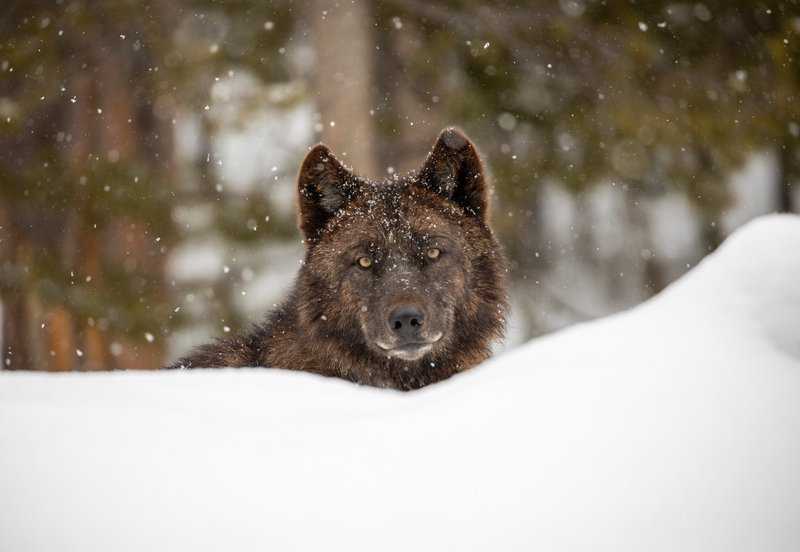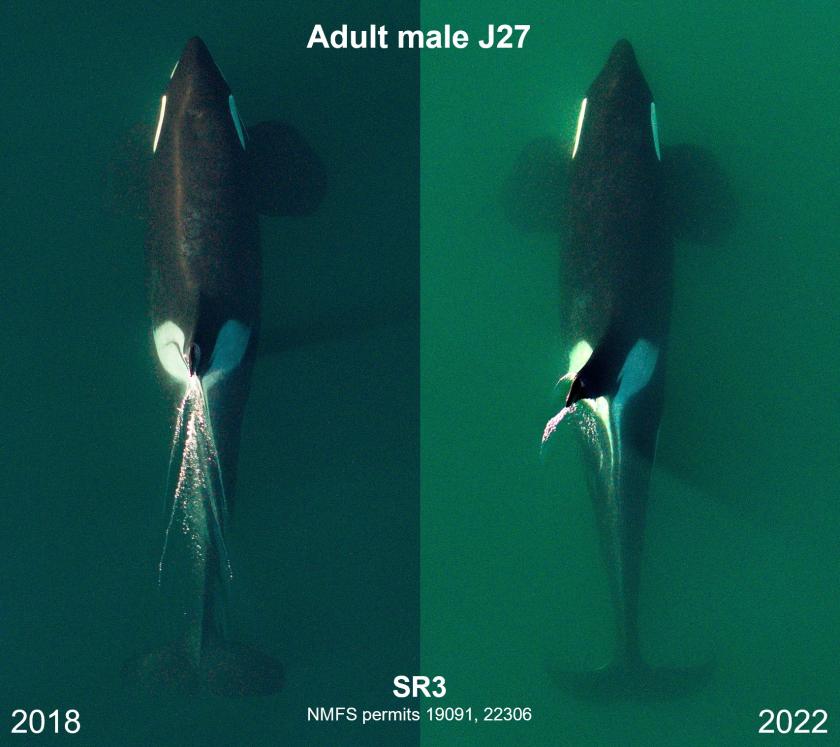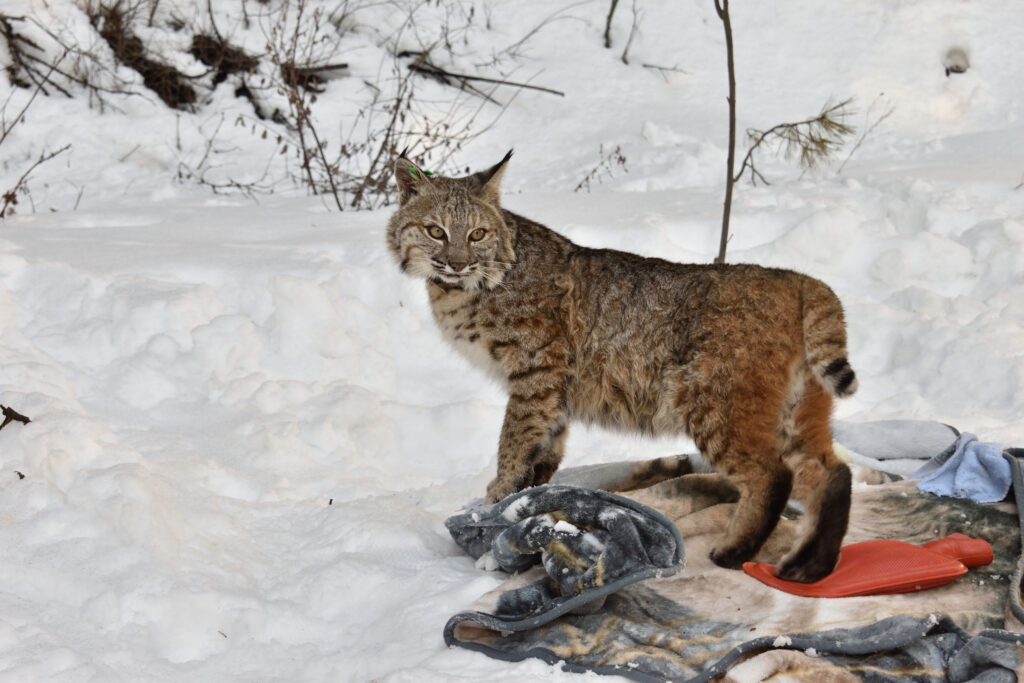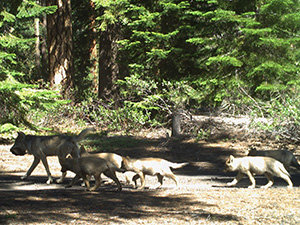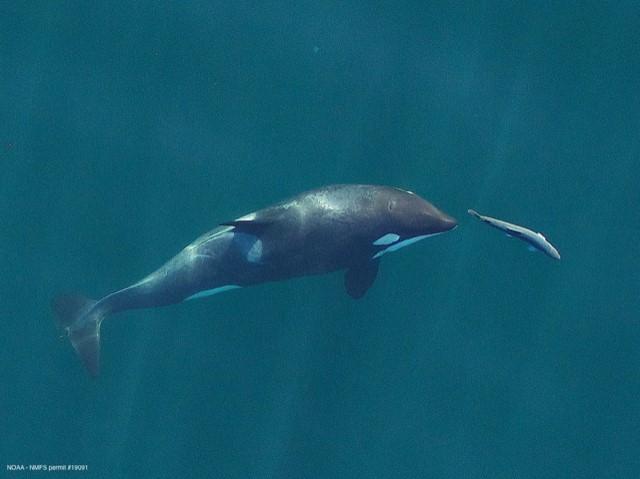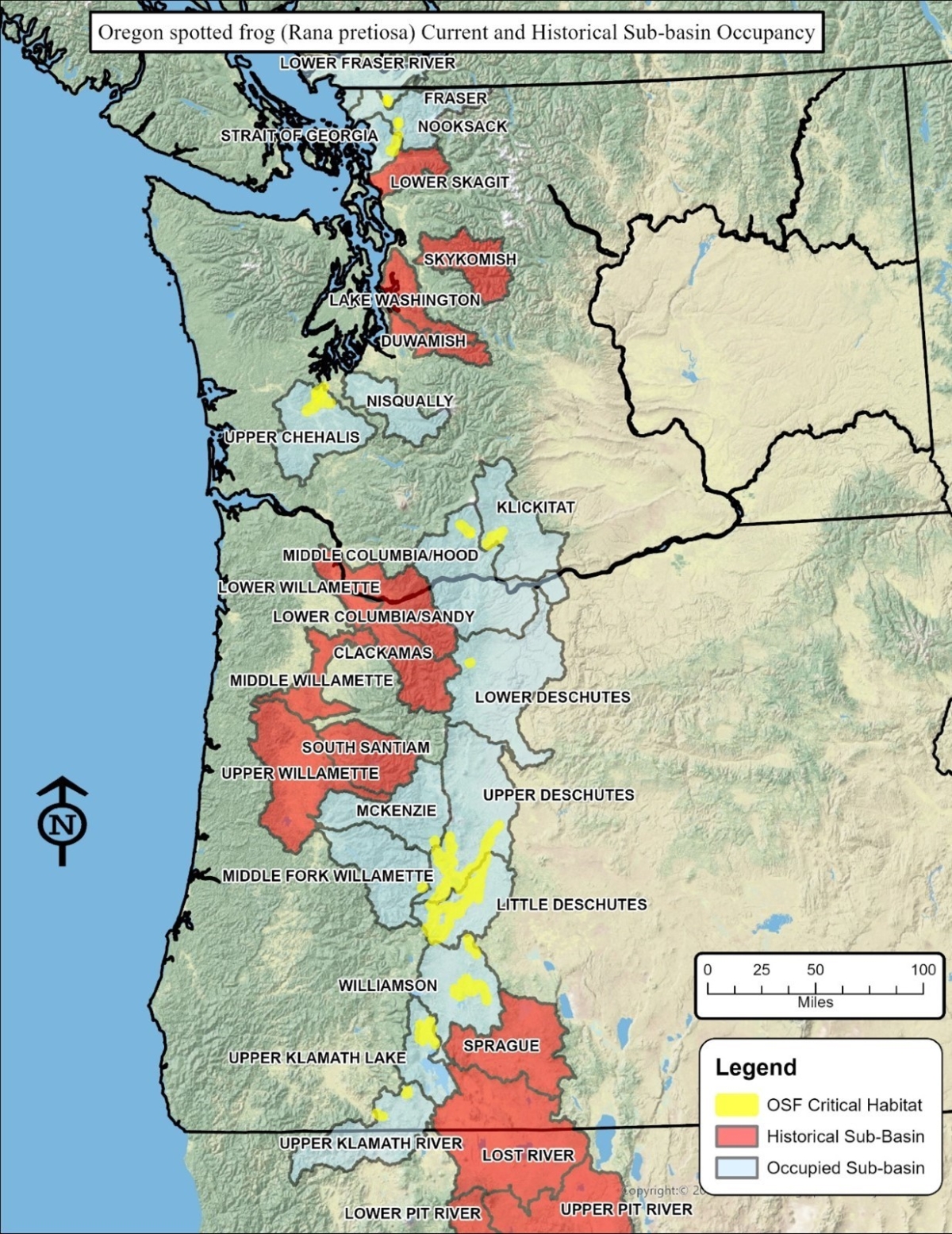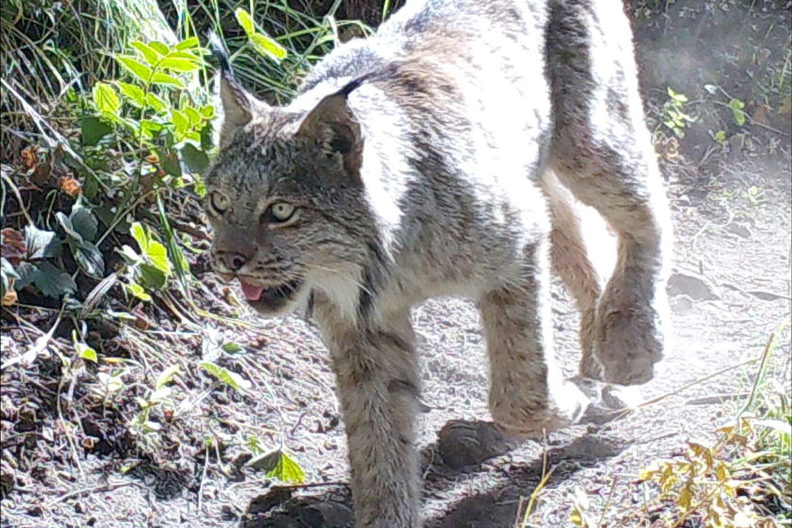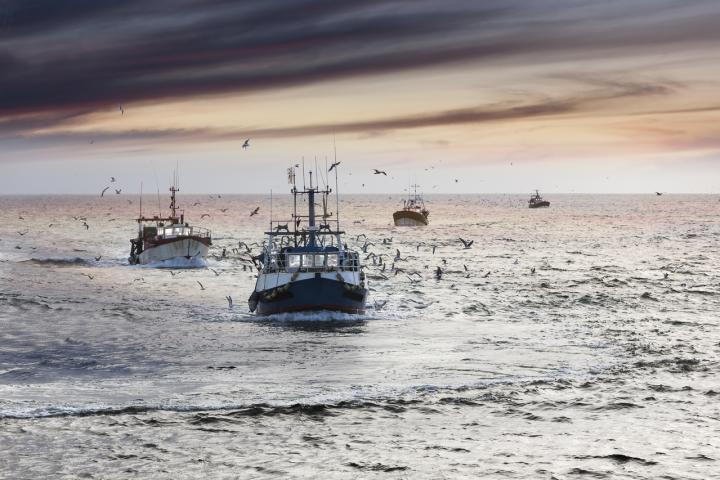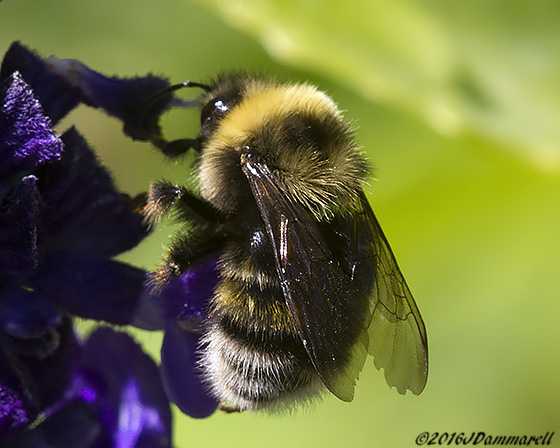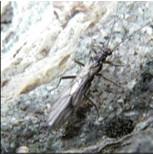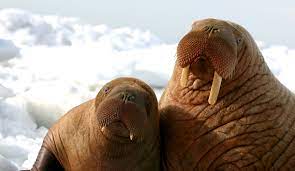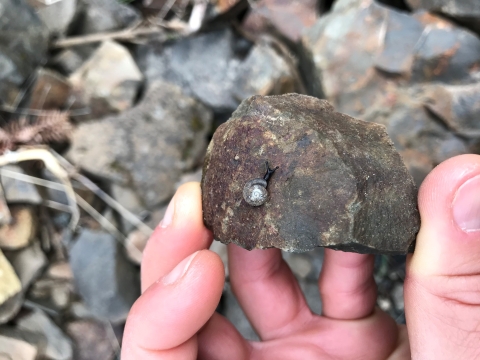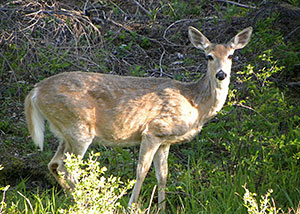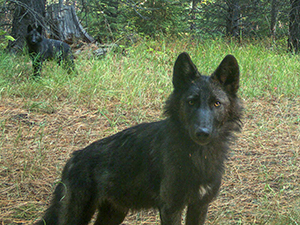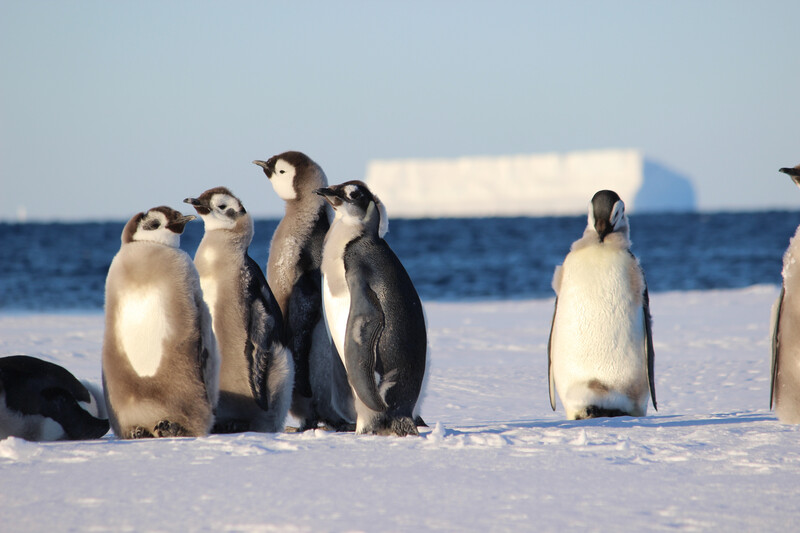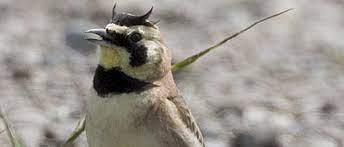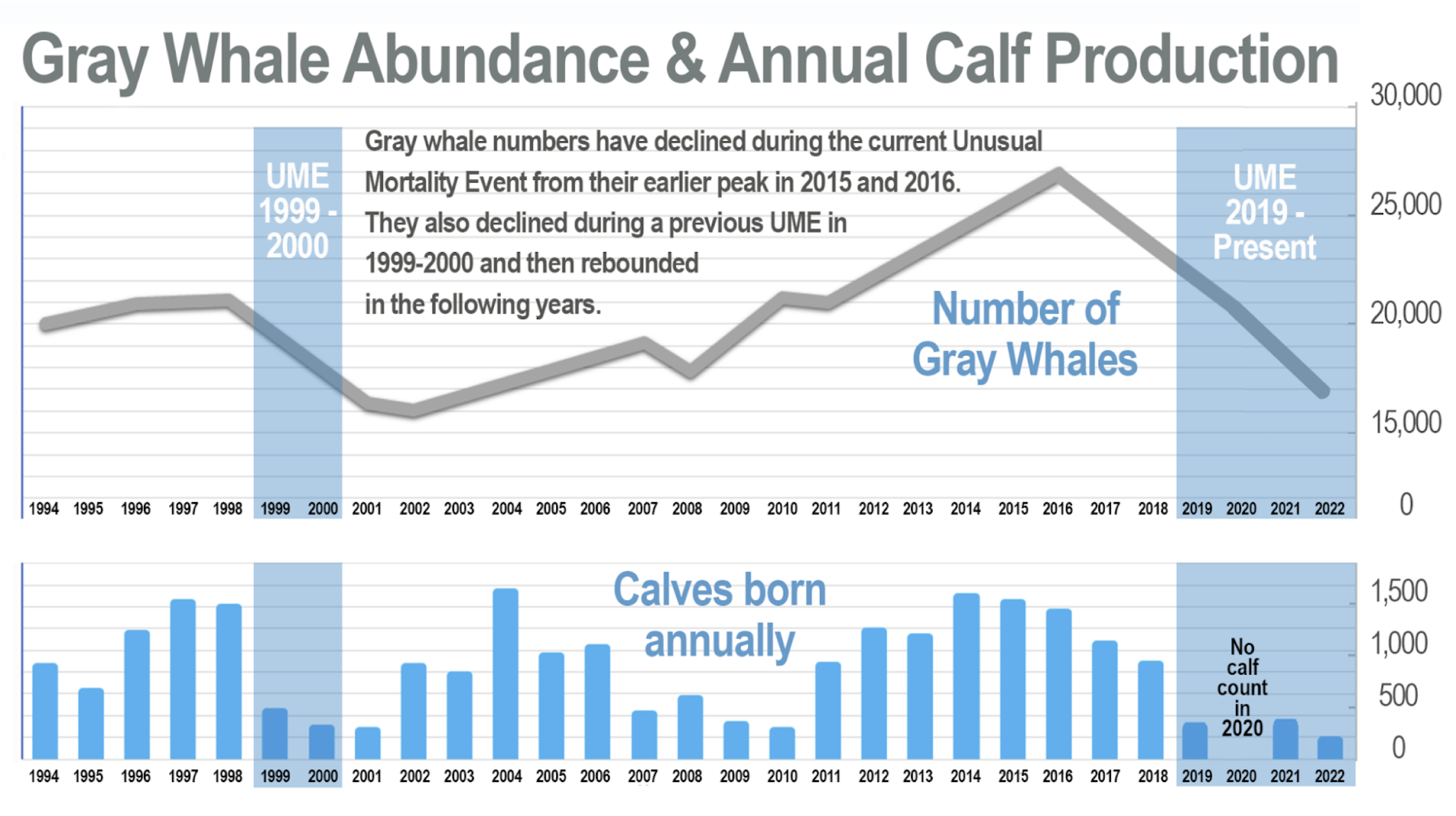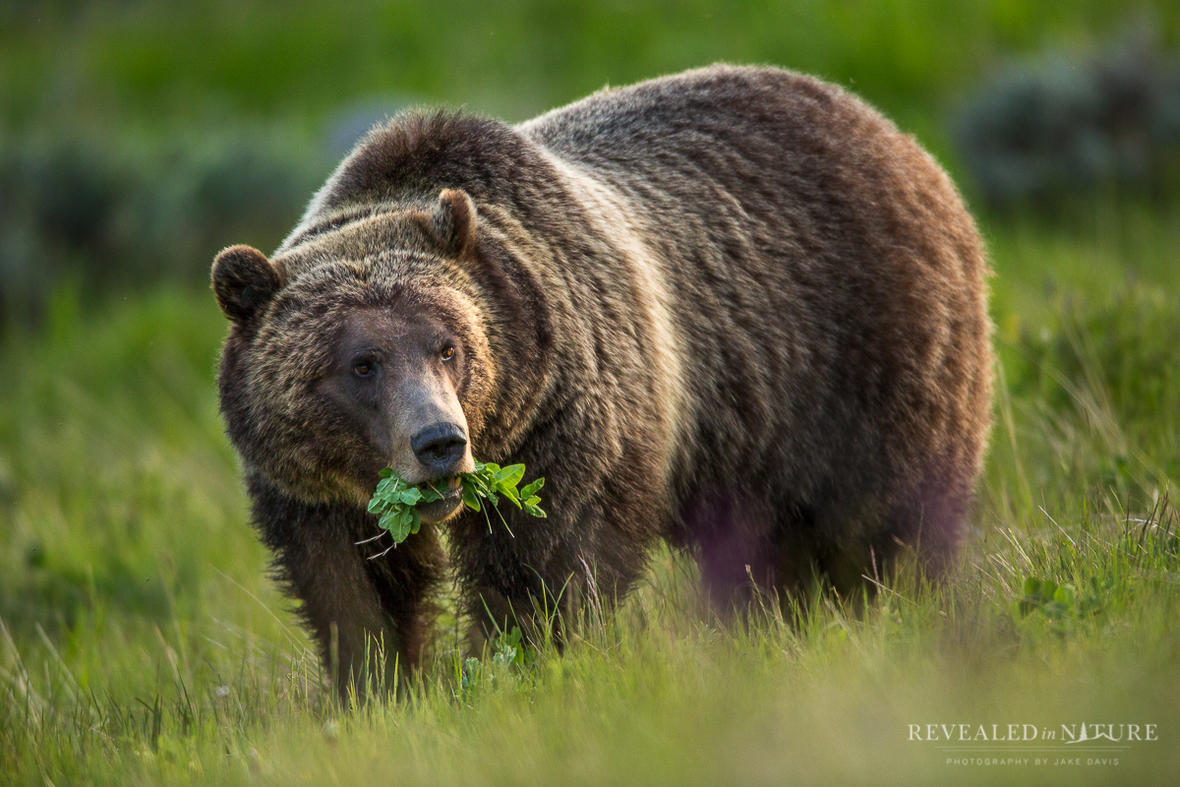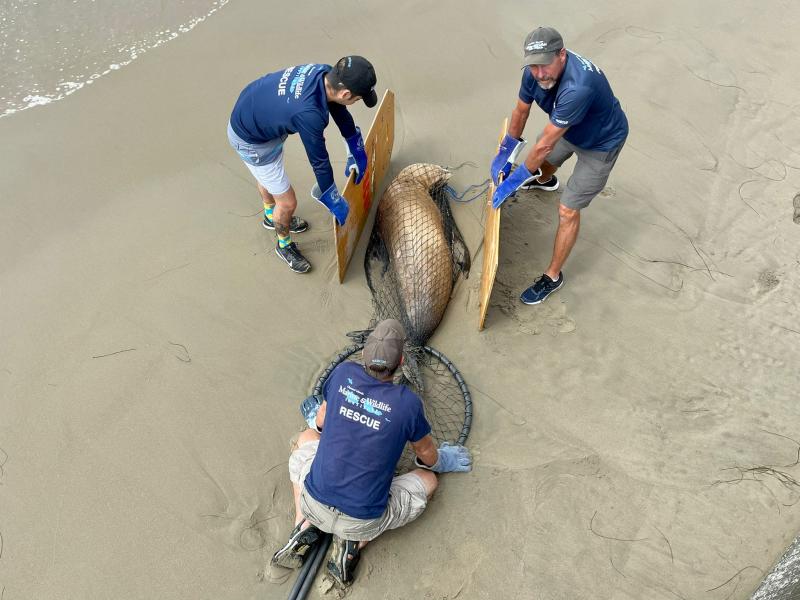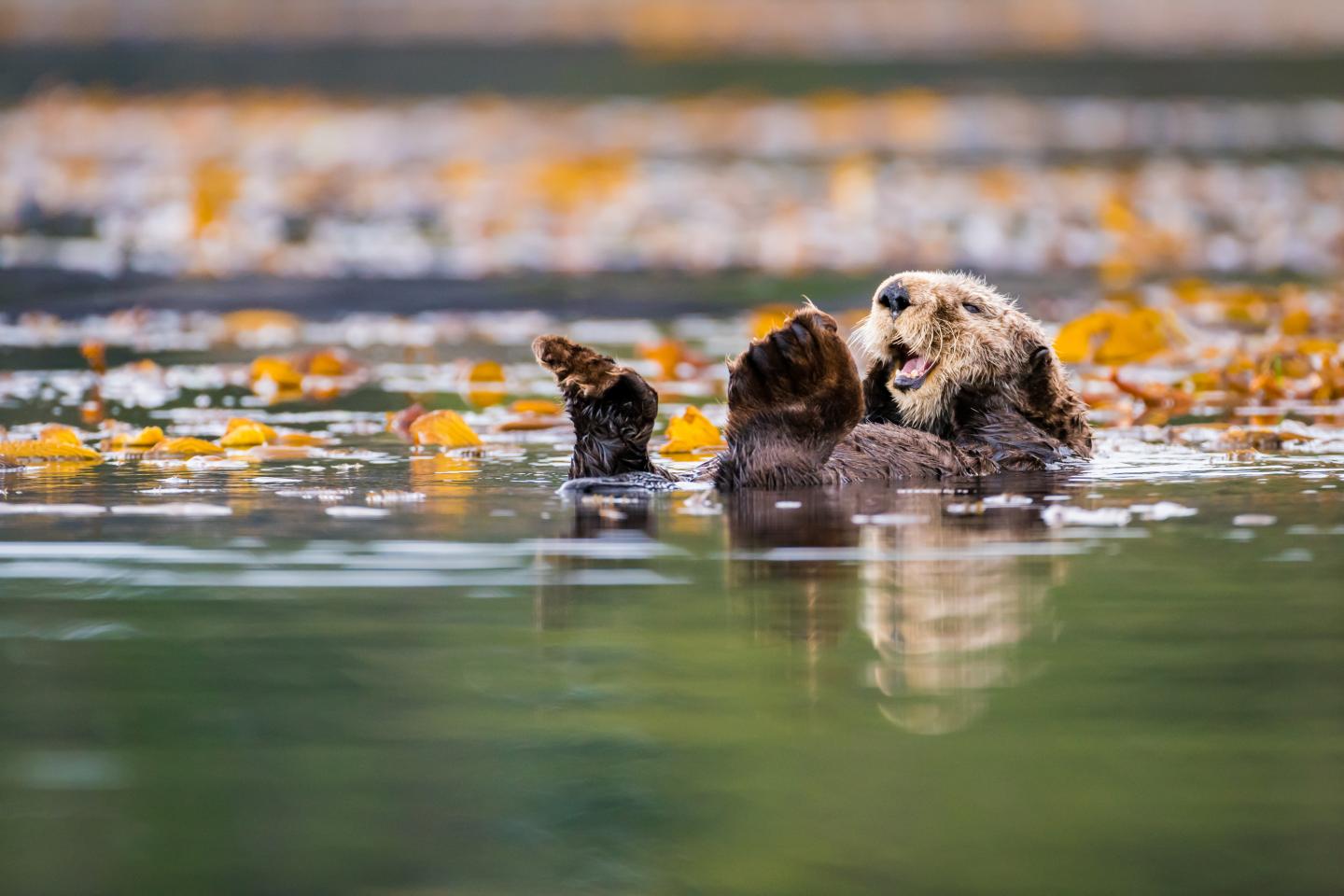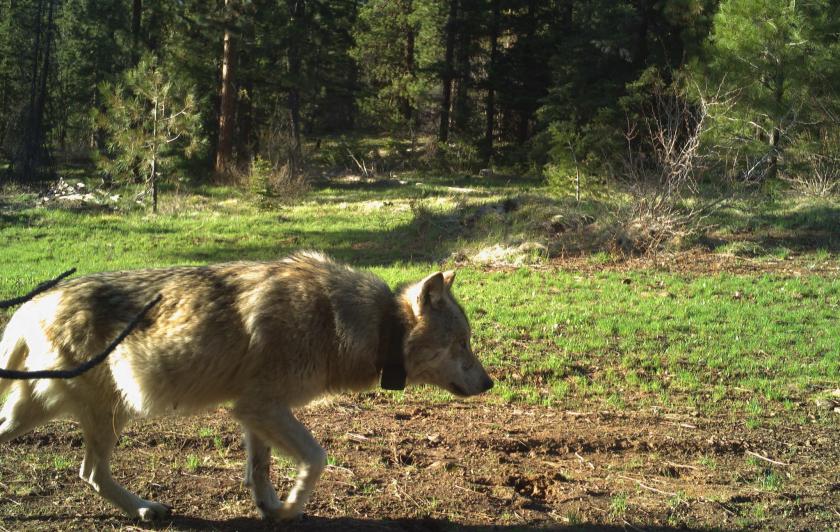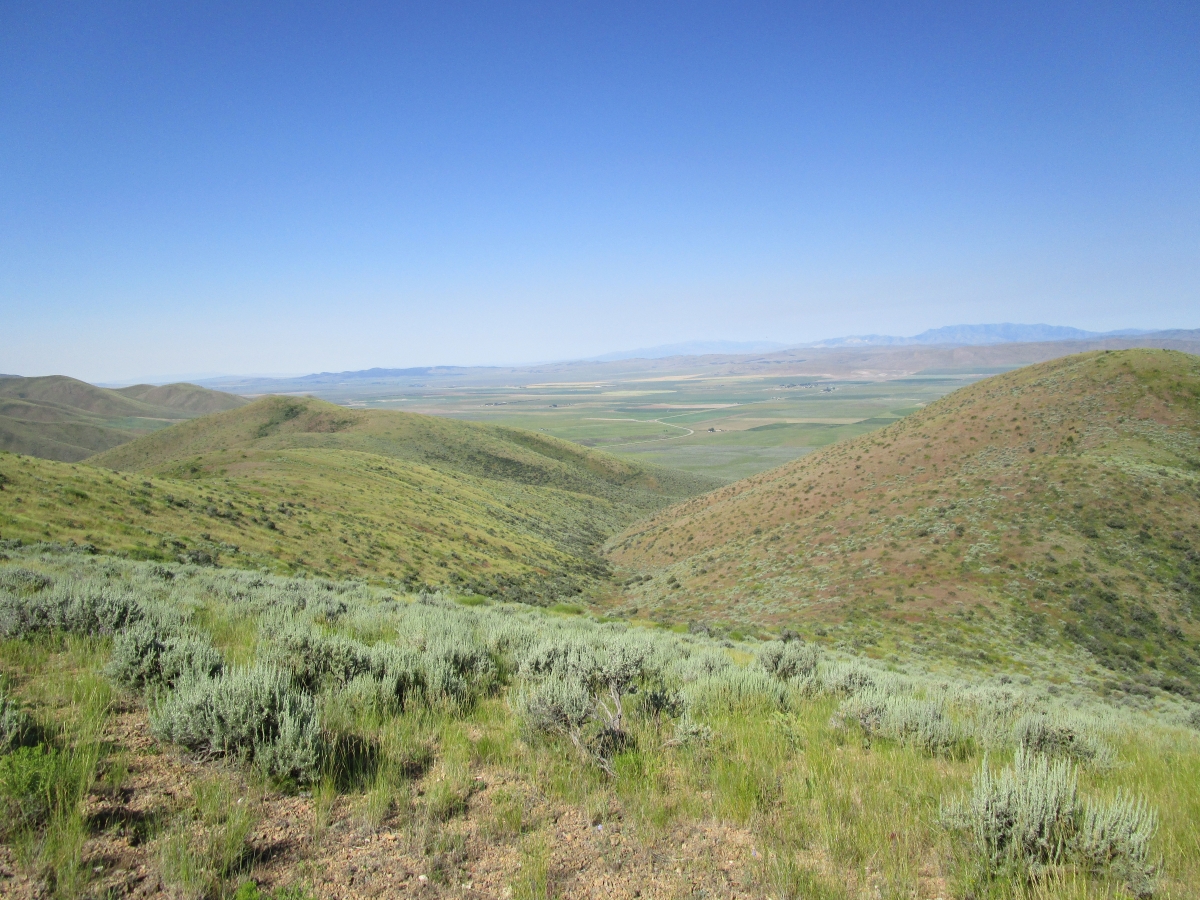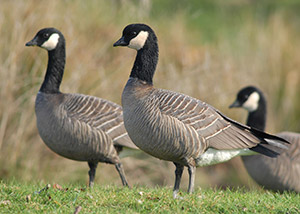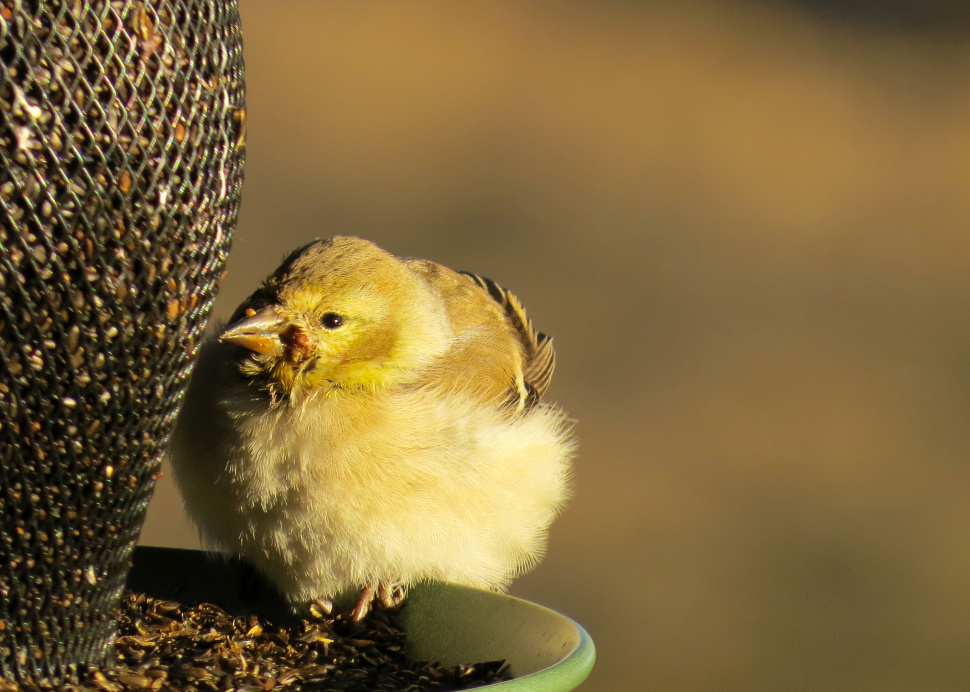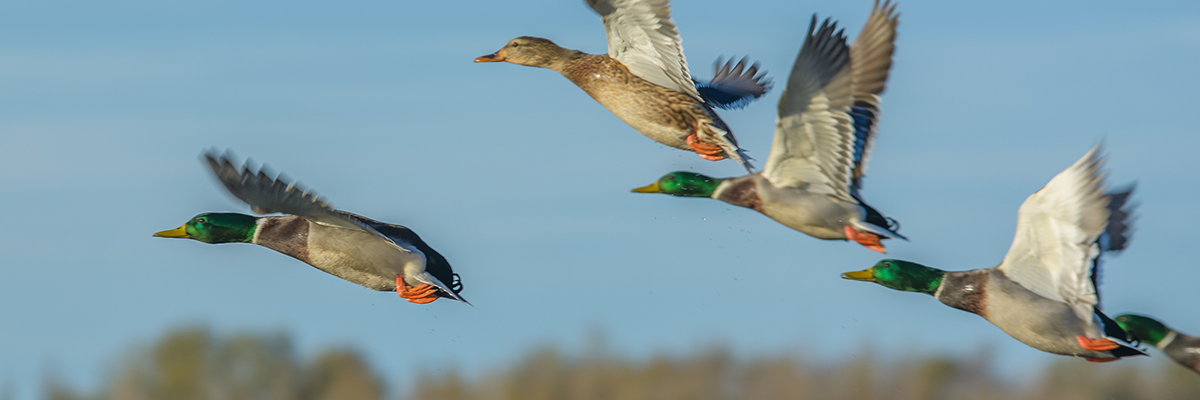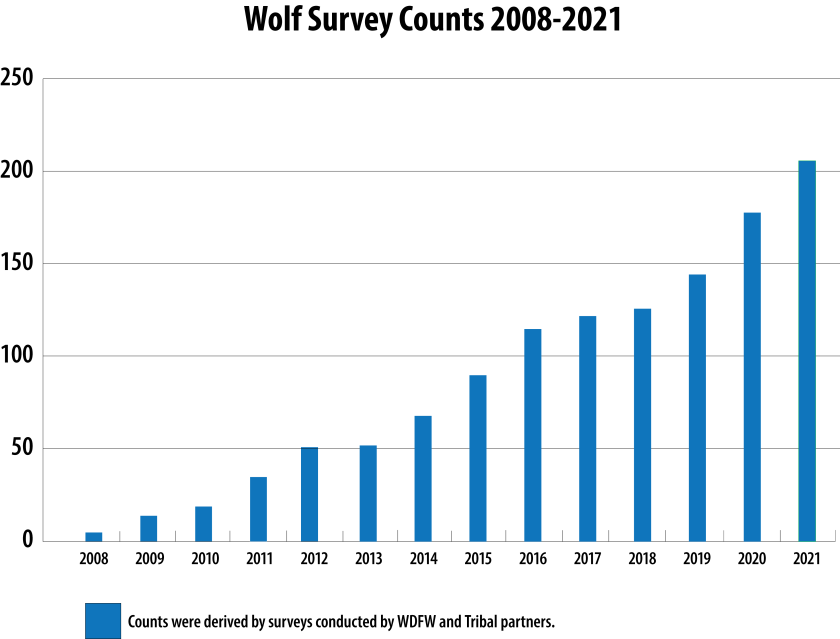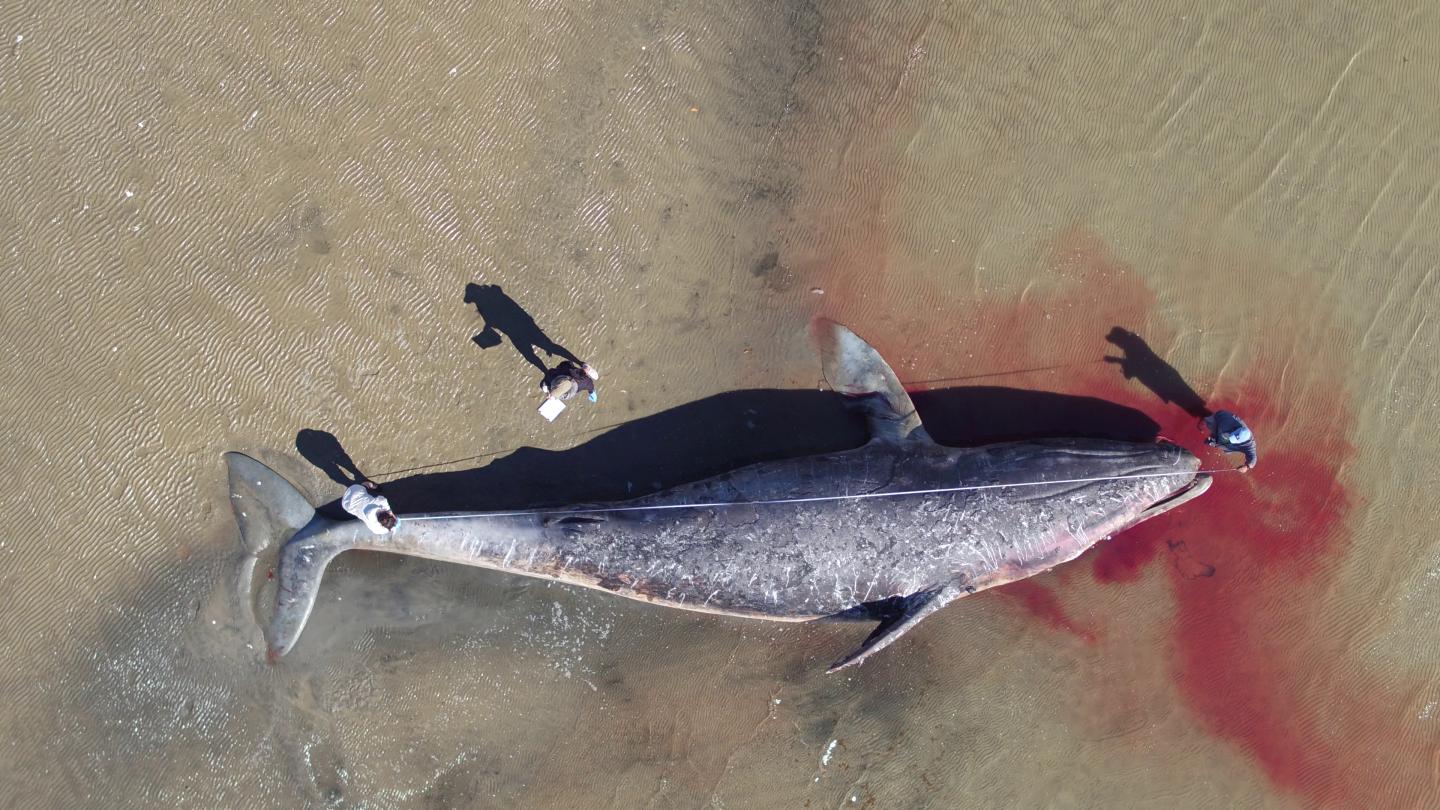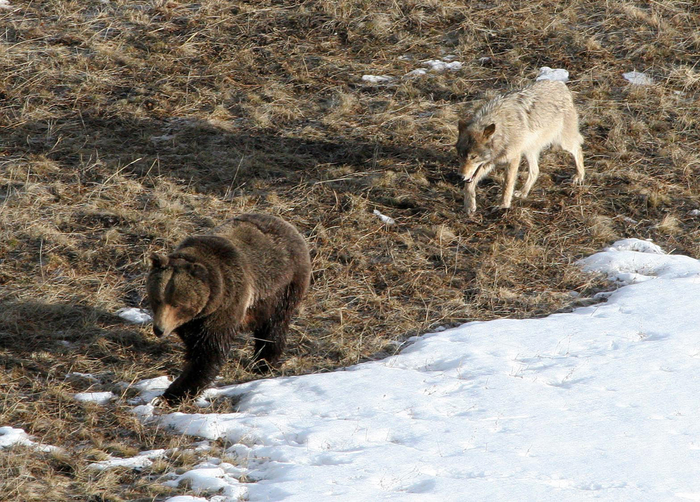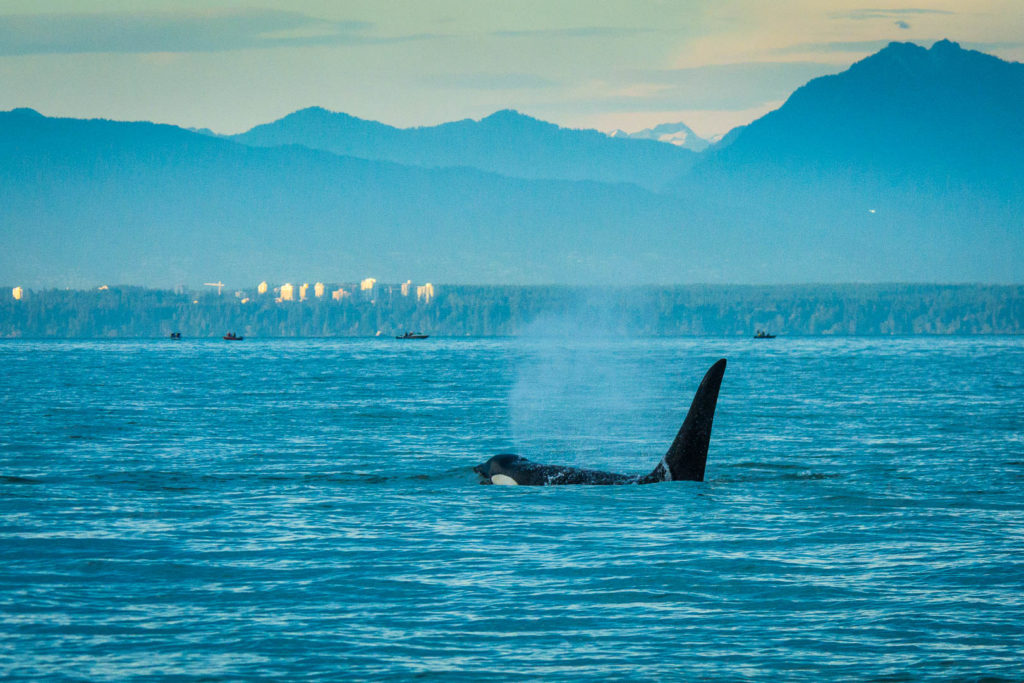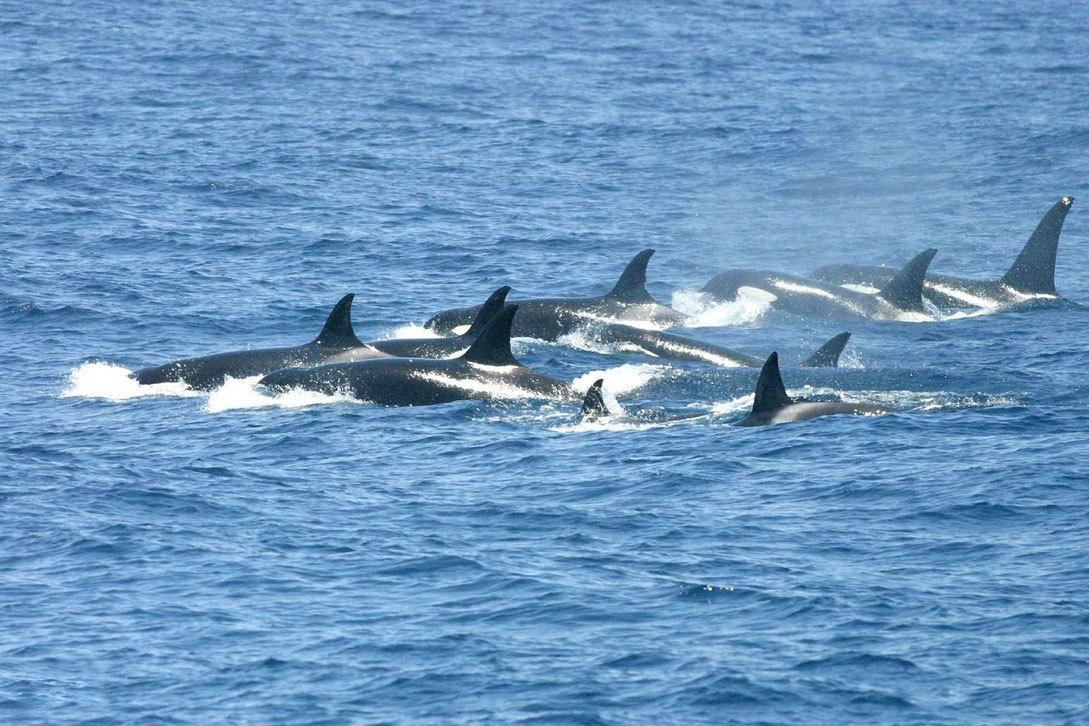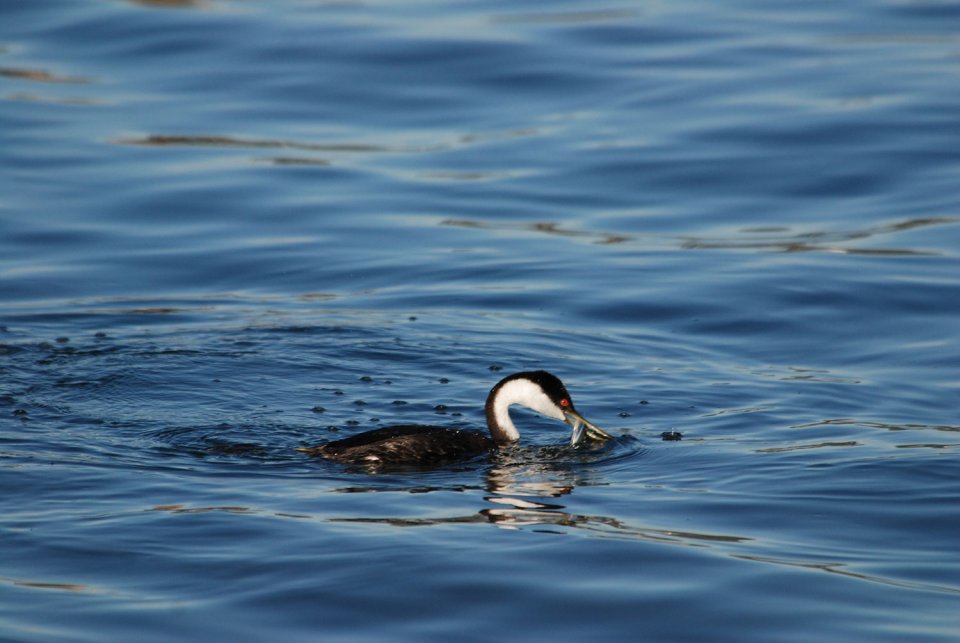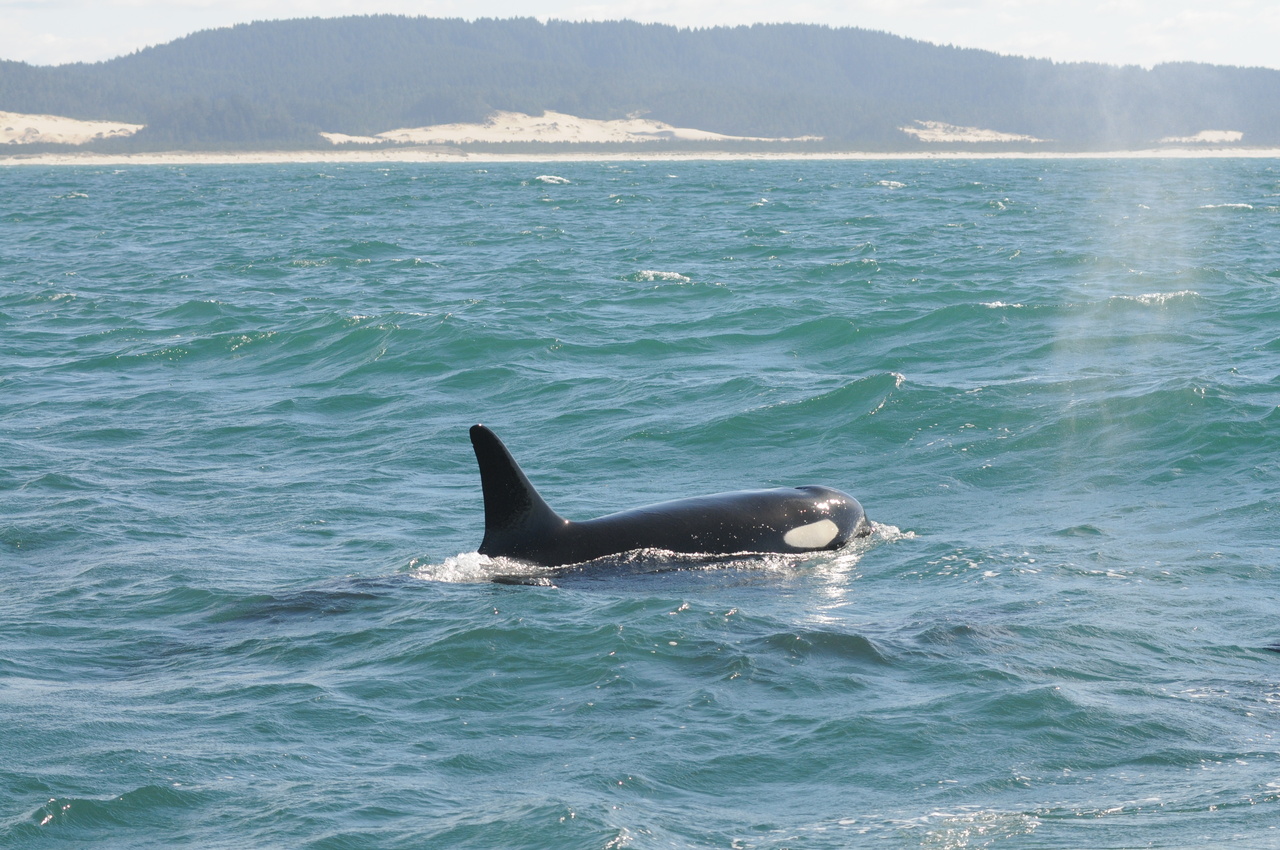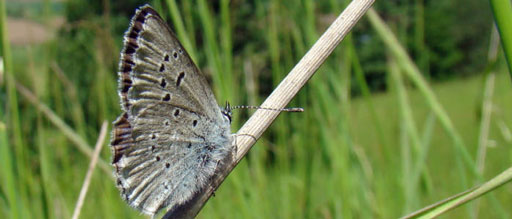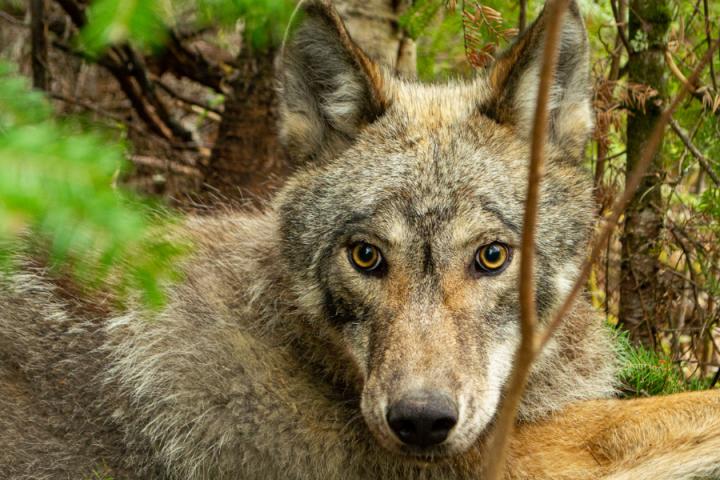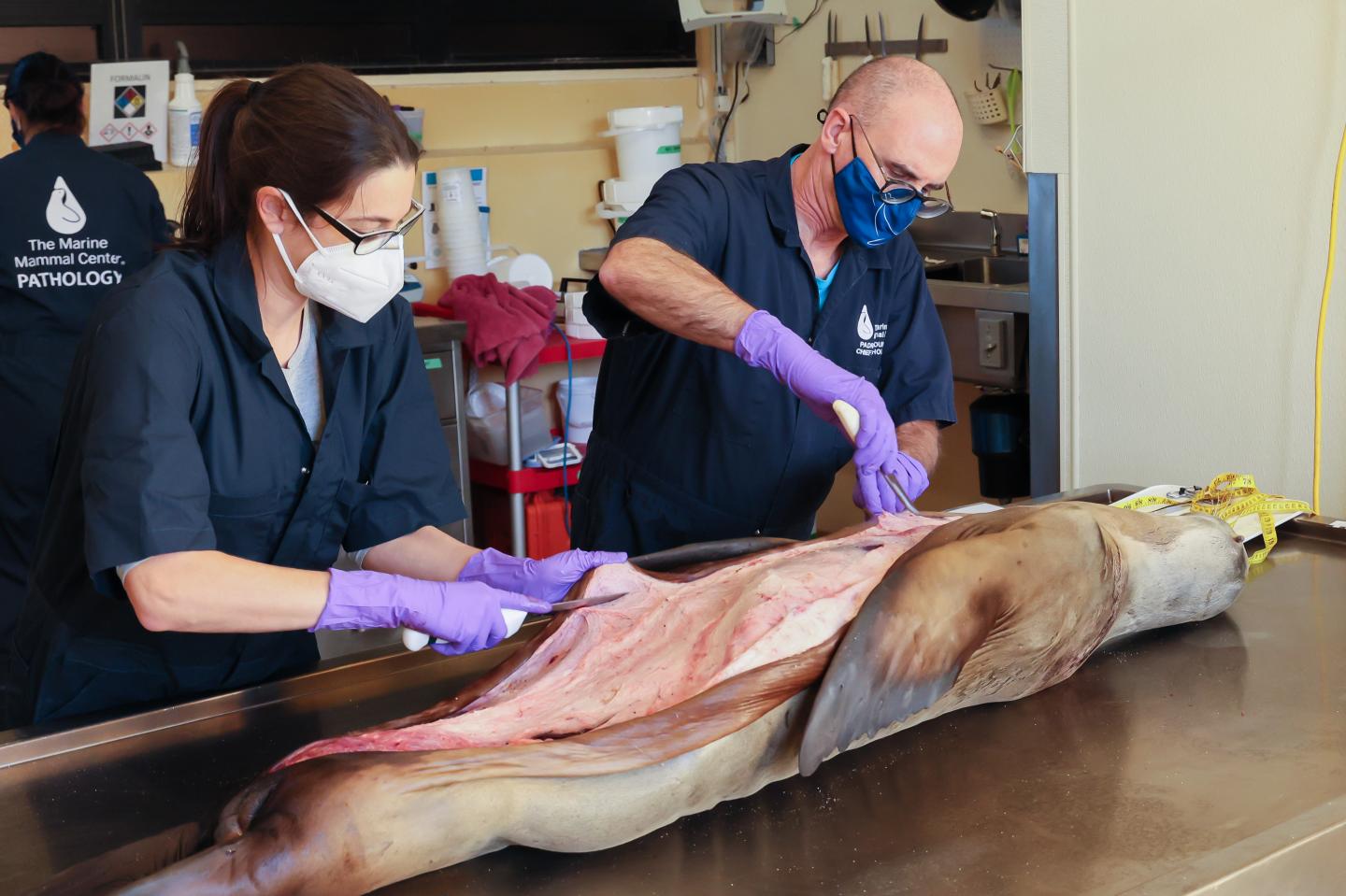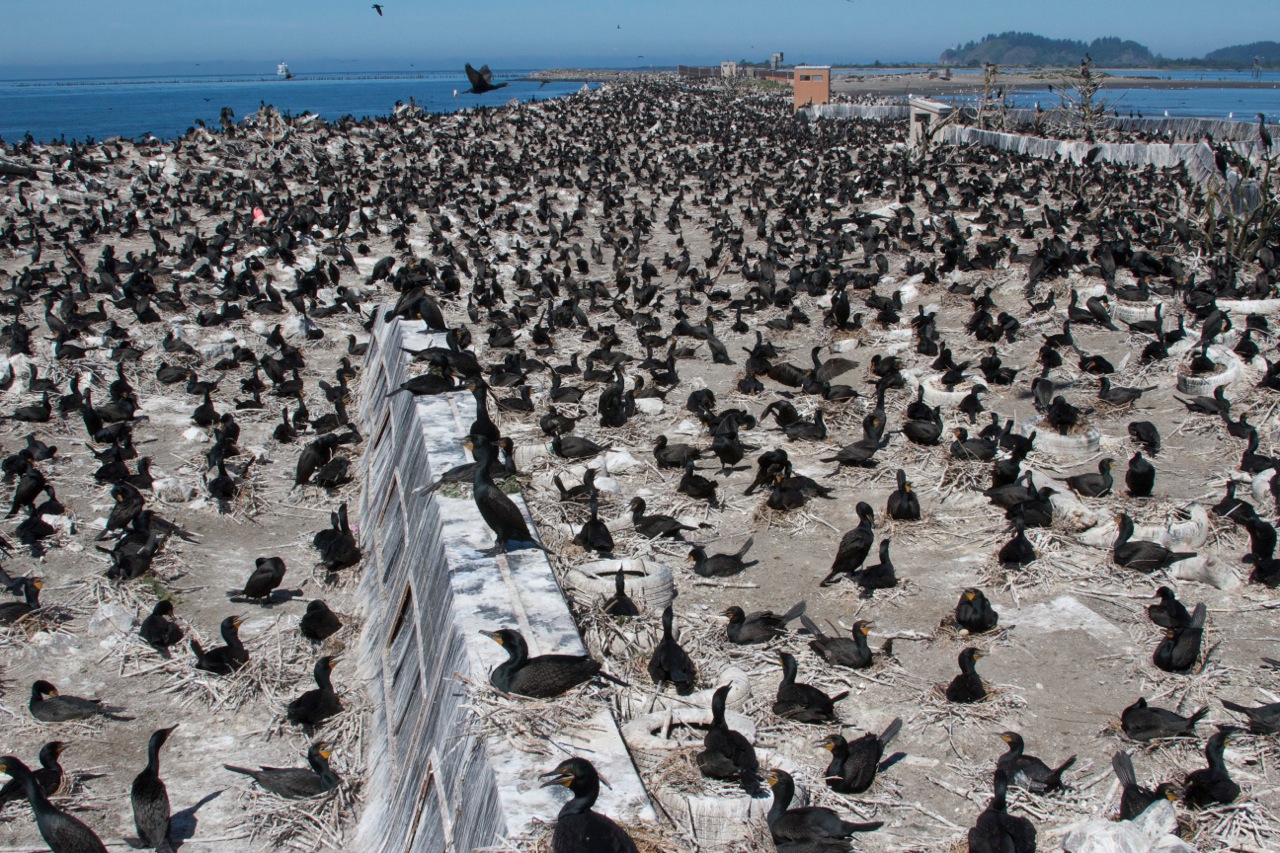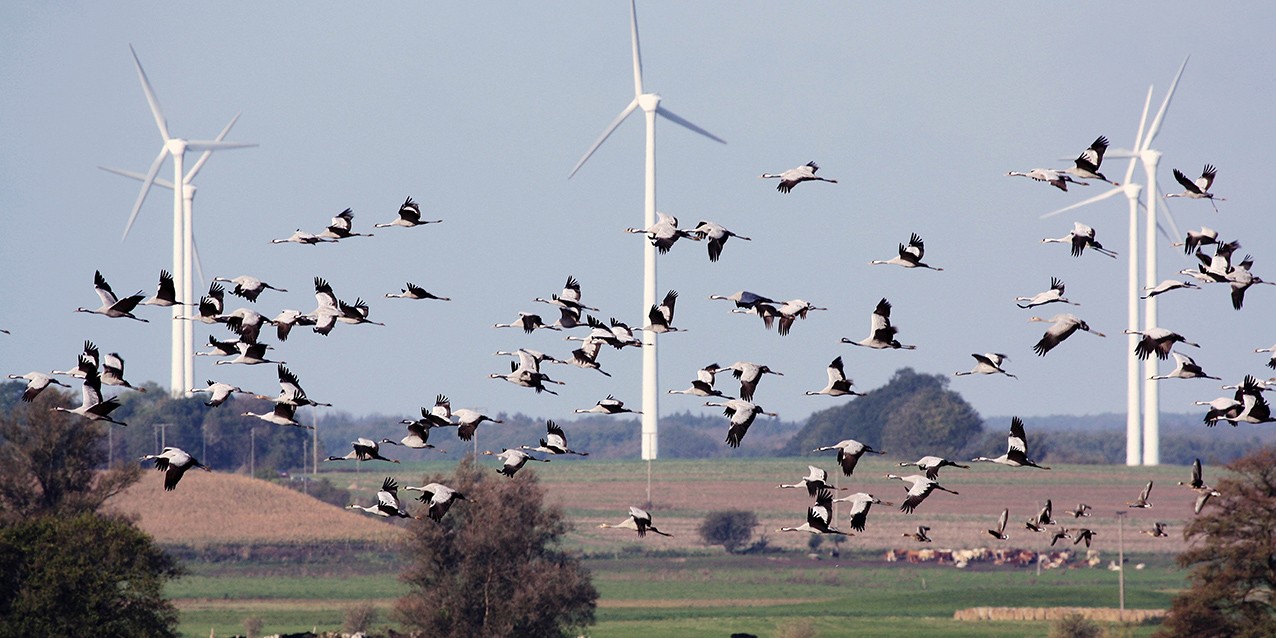Work Continues To Improve Lamprey Passage At Columbia/Snake Dams, Corp Completing Changes To Bonneville Dam Fish Ladder
March 15th, 2025
The U.S. Army Corps of Engineers is in the process of revamping the dam’s northern-most fish ladder near the Washington shore at a cost of some $8 million. According to the Corps, the project is changing out a portion of the fish ladder, which spans 800 feet from top to bottom, that was originally a serpentine passage of concrete walls, called baffles, with a newer baffle design more friendly to lamprey.
Lawsuit Challenges Proposed Massive Gold Mine On Idaho’s South Fork Salmon River
February 25th, 2025
Local and national conservation groups have sued the U.S. Forest Service to challenge its approval of the Stibnite Gold Project, an open-pit cyanide leach gold mine in Idaho’s Salmon River Mountains. The groups say the mine would jeopardize public health and clean water, harm threatened plants and animals, and permanently scar thousands of acres of public land in the headwaters of the South Fork Salmon River.
WDFW Research Shows Fatal White-Nose Syndrome In Bats Continues To Spread, 11 New Counties In 2024
September 13th, 2024
Washington Department of Fish and Wildlife and research partners documented white-nose syndrome and the fungus that causes white-nose syndrome in eleven new counties in 2024.
Interior Department Establishes New Willamette Valley Conservation Area, Part Of National Wildlife Refuge Complex
August 18th, 2024
The Department of the Interior announced this week the establishment of the Willamette Valley Conservation Area in Oregon as the 572nd unit of the U.S. Fish and Wildlife Service-managed National Wildlife Refuge System.
USFWS Petitioned To List Under ESA Freshwater Snail Found Only In Oregon’s Lower Deschutes River
August 9th, 2024
The Center for Biological Diversity this week petitioned the U.S. Fish and Wildlife Service to protect the banded juga — an imperiled freshwater snail in Oregon’s Deschutes River — under the Endangered Species Act.
Washington Approves Changes To Cougar Hunting Rules, Rejects Staff Recommendation To Downgrade Wolf Protection Status
July 26th, 2024
The Washington Fish and Wildlife Commission last week voted 8-1 to approve amended cougar hunting rules. Spurred by a petition from wildlife conservation organizations, the new rules aim to avoid cougar overexploitation.
Washington Predator-Prey Project’s Research Shows Wolves In NE Washington Not Having Much Impact on Deer
July 17th, 2024
Humans drove wolves to extinction in Washington state around the 1930s. Thanks to conservation efforts, by about 80 years later, wolves had returned
Southern Resident Killer Whales In Poor Condition, ‘Vulnerable’; WDFW Asks All Boaters To Give Struggling, ESA-Listed Orcas Space
July 4th, 2024
For the fourth year in a row, the Washington Department of Fish and Wildlife issued an emergency rule requiring commercial whale-watching vessels to stay at least one-half nautical mile away from vulnerable Southern Resident killer whales (SRKW) this summer.
Conservation Groups Submit Comments Blasting BLM’s Draft Amendment To Protect Sage Grouse On 69 Million Acres, 10 Western States
June 21st, 2024
Conservation organizations have submitted comments blasting the U.S. Bureau of Land Management’s draft amendment for 77 land-use plans across the western United States intended to protect the imperiled greater sage grouse.
USFWS Designates 1.2 Million Acres As Critical Habitat In California, Oregon For Coastal Marten
June 7th, 2024
The U.S. Fish and Wildlife Service is designating 1.2 million acres of critical habitat in northwestern California and southwestern Oregon for the coastal distinct population segment of the Pacific marten, also known as the coastal or Humboldt marten.
Marbled Murrelet Study Shows How Artificial Intelligence Can Enhance Monitoring Secretive Species
May 31st, 2024
Artificial intelligence analysis of data gathered by acoustic recording devices is a promising new tool for monitoring the marbled murrelet and other secretive, hard-to-study species, research by Oregon State University and the U.S. Forest Service has shown.
Idaho Study Suggests Parasitic Worm In Brain May Play Role In Declining Moose Populations
May 17th, 2024
A parasitic worm that can infest the brains of moose appears to be playing a role in the decline of the iconic animal in some regions of North America.
Washington’s Wolf Population Keeps Growing At About 23 Percent A Year; In 2023, Count Showed 42 Packs, 260 Wolves
May 3rd, 2024
Washington’s wolf population grew for the 15th consecutive year in 2023, according to the Washington Gray Wolf Conservation and Management 2023 Annual Report released by the Washington Department of Fish and Wildlife.
Oregon Annual Wolf Report Shows No Population Growth For First Time In 16 Years; ‘The Amount Of Poaching, Other Suspicious Deaths Alarming’
April 18th, 2024
The minimum known count of wolves in Oregon at the end of 2023 was 178 wolves, according to the Oregon Wolf Conservation and Management annual report released this week by the Oregon Department of Fish and Wildlife. This is the same number documented in 2022 and does not include 10 wolves translocated to Colorado in 2023 to help establish a wolf population there.
Final Federal EIS Proposes Establishment Of Experimental Grizzly Bear Population In North Cascades National Park
April 5th, 2024
The National Park Service and U.S. Fish and Wildlife Service have published a final Environmental Impact Statement that identifies the preferred alternative to reintroduce grizzly bear into the North Cascades Grizzly Bear Recovery Zone, including North Cascades National Park.
Oregon Fish and Wildlife Commission Votes To List Southern Resident Orcas As Endangered Under State ESA, Forage Near Mouth Of Columbia
February 23rd, 2024
The Oregon Fish and Wildlife Commission has voted unanimously to list Southern Resident orcas as endangered under Oregon's Endangered Species Act. Southern Resident orcas now number just 75 whales in three pods and have been listed as endangered under federal law since 2005.
Montana Files Notice Of Intent To Sue USFWS Over Recent Wolverine ESA Listing
February 2nd, 2024
Montana Fish, Wildlife & Parks has notified the U.S. Fish and Wildlife Service of its intent to pursue legal action over the recent listing of wolverines as a threatened species.
Montana Survey Shows Tolerance Of Wolves Way Up Among State’s General Population, Tolerance of Wolf Hunting Down
January 18th, 2024
Montanans have varying attitudes and beliefs about wolves and wolf management, and over time some of those feelings have shifted, according to a new survey conducted cooperatively by Montana Fish, Wildlife & Parks and the University of Montana.
Washington Governor Directs WDFW To Draft New Rules For Handling Wolf-Livestock Conflicts
January 18th, 2024
Washington Gov. Jay Inslee last week directed the Washington Fish and Wildlife Commission to draft new rules to guide when wolves can be killed for conflict with livestock and prioritize using nonlethal methods of conflict deterrence over killing wolves.
Canadian Researchers Find Toxic Chemicals From Oil Spills, Wildfire Smoke (PAHs) In Killer Whales, Transfers Mother To Fetus
January 5th, 2024
Toxic chemicals produced from oil emissions and wildfire smoke have been found in muscle and liver samples from Southern Resident killer whales and Bigg’s killer whales.
USFWS Reverses Course, Lists North American Wolverine As Threatened Under ESA, Taking Comment On Rule Allowing Certain ‘Take’ Activities
November 30th, 2023
The U.S. Fish and Wildlife Service has announced its final rule to list the distinct population segment of the North American wolverine in the contiguous U.S. as a threatened species under the Endangered Species Act.
Conservation Groups File Appeal Urging Washington Governor To Order New Rules For Wolf-Killing
November 30th, 2023
Conservation groups this week filed an appeal asking Washington Gov. Jay Inslee to order the Washington Fish and Wildlife Commission to draft enforceable rules that limit when the state can kill endangered wolves for conflicts with livestock.
USFWS Finalizes Designation Of Gray Wolf Experimental Population In Colorado, Wolves To Come From Oregon
November 16th, 2023
In support of a statewide voter-led initiative passed in November 2020, the U.S. Fish and Wildlife Service has finalized the designation of an experimental population of gray wolves in Colorado under the Endangered Species Act. This action provides management flexibility in support of the state of Colorado’s voter-mandated gray wolf reintroduction program.
USFWS Seeks Comment On Draft Strategy To Remove Non-Native Barred Owls To Save California’s Spotted Owls
November 16th, 2023
The U.S. Fish and Wildlife Service is seeking public input on a draft environmental impact statement and draft Barred Owl Management Strategy that addresses the threat of the non-native and invasive barred owls to native northern and California spotted owls.
Rethinking Wolf Hunting Behavior: Researchers Observe Wolves Killing Sea Otters, Seals On Alaska Coast
November 3rd, 2023
Firsthand observations of a wolf hunting and killing a harbor seal and a group of wolves hunting and consuming a sea otter on Alaska’s Katmai coast have led scientists to reconsider assumptions about wolf hunting behavior.
Draft Grizzly Bear Restoration Plan By USFWS, NPS Calls For 200 Bears In North Cascades Within 60-100 Years
October 12th, 2023
The U.S. Fish and Wildlife Service and National Park Service have released a draft plan analyzing options to restore grizzly bears to the North Cascades in Washington.
Up To 10 Wolves From Northeast Oregon To Be Relocated To Colorado West Slope In Voter-Approved Reintroduction Effort
October 12th, 2023
In a one-year agreement announced between Colorado Parks and Wildlife and Oregon Department of Fish and Wildlife, Oregon will be a source for up to 10 wolves for the Colorado gray wolf reintroduction effort. These wolves will be captured and translocated between December 2023 and March 2024.
Group Files Lawsuit Against USFWS Over Lack Of ESA Protection For American Bumblebees
October 12th, 2023
The Center for Biological Diversity filed a formal notice this week of its intent to sue the U.S. Fish and Wildlife Service for failing to protect four imperiled bee species, including American bumblebees, under the Endangered Species Act. Southern Plains bumblebees, variable cuckoo bumblebees and blue calamintha bees are also included in today’s filing.
UW Study Quantifies Fossil Fuel Emissions Causing Polar Bear Declines; Method Can Be Used For Other Species Impacted By Global Warming
September 7th, 2023
New research from the University of Washington and Polar Bears International in Bozeman, Montana, quantifies the relationship between greenhouse gas emissions and the survival of polar bear populations.
NOAA Begins Court-Ordered Work On EIS Analyzing Increase Of Hatchery Salmon Production To Feed Imperiled Killer Whales
August 23rd, 2023
Responding to a recent District Court order, NOAA Fisheries has opened a review of its prey increase program specifically designed to provide more food for endangered Southern Resident killer whales in Puget Sound. NOAA is seeking written and verbal feedback from the public as it develops an Environmental Impact Statement for the program.
Promising Sign For Declining Gray Whales? Researchers Count Increase In Calves Headed North To Arctic Feeding Grounds
August 10th, 2023
Almost twice as many gray whale calves swam north with their mothers to their Arctic feeding grounds this spring compared to last year, according to a new count completed by NOAA Fisheries’ Southwest Fisheries Science Center.
Study Of Protected Birds Found Dead Along Powerlines In The West Found Illegal Shooting A Significant Threat, 66 Percent Of Birds Studied Shot
August 10th, 2023
A study examining protected birds found dead along power lines on public lands in the western U.S. shows that gunshot deaths were three times more common than deaths from other causes.
UW Research Show Massive Seabird Die-Offs Off West Coast Indicator Of Marine Heat Waves; Can Kill Millions Of Birds Within Months
July 13th, 2023
New research led by the University of Washington uses data collected by coastal residents along beaches from central California to Alaska to understand how seabirds have fared in recent decades. The paper shows that persistent marine heat waves lead to massive seabird die-offs months later.
NOAA Fisheries New Count Of West Coast Gray Whales Shows Continued Decline, Connected To Shifting Prey Abundance In Arctic
July 13th, 2023
A new count of gray whales that migrate along the West Coast each year found a continued decline of this population. However, new clues suggest that population numbers may soon start to rebound.
Montana Wolf Population Drops Slightly To 1,087 Wolves, Packs Now At 181, Down By 10; 258 Animals Harvested
June 29th, 2023
For the second year in a row, wolf numbers in Montana did again fall slightly in 2022, according to the 2022 Montana Fish, Wildlife & Parks Wolf Report.
Scientists Concerned About Increasing Skin Disease In Southern Resident Killer Whales; May Be Sign Of Compromised Immune System
June 29th, 2023
In a recently published study, scientists investigating the endangered southern resident killer whales have made a noteworthy observation: the prevalence of skin disease within this population has shown a significant increase.
NOAA Court Filing Defends Hatchery ‘Prey Increase’ Program For Imperiled Orcas; A ‘Critical Tool’ To Provide Salmon For Whales Suffering Food Shortage
June 21st, 2023
A three-year-old hatchery production program spread across Puget Sound and the Columbia and Snake rivers, designed specifically to provide more food for Southern Resident killer whales should remain in place, according to NOAA Fisheries in its most recent declaration in federal court.
Study: Even With Population Density Increase, Food Decline, Climate Change, Human Impacts, Yellowstone Grizzlies Maintaining Body Fat For Hibernation
June 8th, 2023
Grizzly bears in the Greater Yellowstone Ecosystem have been able to gain the body fat they need for hibernation even as population densities have increased and as climate change and human impacts have changed the availability of some foods, according to a new study by the U.S. Geological Survey and its partners.
Washington Predator-Prey Project: New Research Shows Coyotes, Bobcats Move Into Human Inhabited Areas To Avoid Cougars, Wolves
May 24th, 2023
Since their protection under the Endangered Species Act, wolf populations have been making a comeback in the continental United States. Conservationists have argued that the presence of wolves and other apex predators, so named because they have no known predators aside from people, can help keep smaller predator species in check.
Inslee Signs Legislation Creating 1000-Yard Mandatory Vessel Buffer Around Endangered Orcas, Effective Jan. 2025
May 18th, 2023
Washington Gov. Jay Inslee has signed new legislation to create a mandatory 1,000-yard vessel buffer around Southern Resident killer whales to protect the endangered population from vessel noise and disturbance. The expanded buffer requirement goes into effect January 2025.
Southern Resident Orca Buffer Bill Clears Washington Legislature; All Boats Must Stay 1,000 Yards From Killer Whales
April 20th, 2023
A bill to create a 1,000-yard buffer around the critically endangered Southern Resident orcas is headed to Washington Gov. Jay Inslee’s desk for his signature after clearing a final legislative hurdle this week. Senate Bill 5371 requires that boaters stay 1,000 yards away from Southern Residents, beginning in 2025.
Oregon Wolf Report Shows Increase Of Three Wolves Last Year, Four Breeding Pairs In Western Oregon; ‘Illegal Take Unacceptably High’
April 20th, 2023
The minimum known count of wolves in Oregon at the end of 2022 was 178 wolves, an increase of three wolves over the 2021 minimum known number of 175, according to the Oregon Wolf Conservation and Management annual report released today.
Washington Wolf Report Shows 5 Percent Increase In State’s Population; A Minimum 216 Wolves, 37 Packs, First Pack In South Cascades
April 14th, 2023
The Washington Gray Wolf Conservation and Management 2022 Annual Report released by the Washington Department of Fish and Wildlife shows a 5% increase in wolf population growth from the previous count in 2021. WDFW also documented Washington’s first pack to recolonize the south Cascades this winter.
Why Are Southern Resident Killer Whales Not Recovering? Ground-Breaking Study Shows Inbreeding Major Contributor To Decline Of Endangered Orcas
March 22nd, 2023
The small size and isolation of the endangered population of Southern Resident killer whales in the Pacific Northwest have led to high levels of inbreeding. This inbreeding has contributed to their decline, which has continued as surrounding killer whale populations expand, according to research published in Nature Ecology and Evolution.
Northwest Washington Study: With Less Salmon To Eat, Bald Eagles Showing Up On Dairy Farms To Get Food From Farm By-Products
March 22nd, 2023
Bald Eagles and dairy farmers exist in a mutually beneficial relationship in parts of northwestern Washington State. According to a new study, this "win-win" relationship has been a more recent development, driven by the impact of climate change on eagles' traditional winter diet of salmon carcasses, as well as by increased eagle abundance following decades of conservation efforts.
UW/NOAA Study Looks At Why Northern Resident Orcas Doing Better Than Southern Residents; They Hunt Differently
March 16th, 2023
In the Pacific Northwest and British Columbia, scientists have been sounding the alarm about the plight of southern resident orcas. Annual counts show that population numbers, already precarious, have fallen back to mid-1970s levels.
Judge Rules NOAA Fisheries Failed To Protect Humpback Whales When Issued Take Permit For Sablefish Pot Fishery
March 16th, 2023
A federal court this week ruled in favor of the Center for Biological Diversity in a lawsuit arguing that the National Marine Fisheries Service failed to protect endangered Pacific humpback whales from deadly entanglements in sablefish pot gear off California, Oregon and Washington.
USFWS Releases Draft Recovery For Oregon Spotted Frog, Most Aquatic Frog In PNW; Over 76 Percent Of Range Gone
March 9th, 2023
The U.S. Fish and Wildlife Service has announced the availability of a draft recovery plan for the Oregon spotted frog, which has lost most of its habitat from southern British Columbia, through the Cascades, and into southern Oregon.
WSU Study Estimates, Surprisingly, About 50 Canada Lynx in Glacier National Park; Could Provide Climate Haven
March 9th, 2023
Glacier National Park is home to around 50 Canada lynx, more than expected, surprising scientists who recently conducted the first parkwide occupancy survey for the North American cat.
New Data On Salmon Behavior In Ocean, Availability of Chinook For Endangered Orcas, Resets Threshold For Fishing Limits
February 17th, 2023
New research examines how Chinook salmon from West Coast rivers travel through the ocean. It shows that endangered Southern Resident killer whales do not have access to as many salmon prey as previously thought.
USFWS To Initiate Review Determining If Two Grizzly Bear Populations Should Be De-Listed Under Federal ESA
February 16th, 2023
The U.S. Fish and Wildlife Service has completed the initial review of three petitions filed to remove the grizzly bear in the lower 48 States from the list of endangered and threatened wildlife under the Endangered Species Act in certain ecosystems. The Service says two of these petitions present substantial information indicating the grizzly bears in the Northern Continental Divide Ecosystem and the Greater Yellowstone Ecosystem may qualify as their own distinct population segment and may warrant removal from the ESA list.
UM Study On Montanans’ Views About Grizzly Bears: Most Think The Bruins Have Right To Exist, But Also Support Allowing Hunting
February 16th, 2023
For an animal whose population barely tops 2,000, Montana’s grizzly bears hold an outsized presence in the psyche and politics of the Treasure State.
Endangered Southern Resident Killer Whale Mothers Pay High Price For Raising Sons: Sacrifice Reproduction (And Species Recovery) To Care For Male Offspring
February 9th, 2023
Raising sons is an exhausting experience that leaves killer whale mothers far less likely to produce more offspring, new research shows.
Idaho’s Wolf Population Continues To Drop, Goal Is To Reduce 1,337 Wolves To Around 500
February 2nd, 2023
Idaho’s 2022 population estimate of 1,337 wolves declined by about 13%, or 206 wolves, compared with the 2021 estimate based on cameras surveys that measure the population during summer near its annual peak.
Top Predator Feeding On Top Predator: After Eliminating Deer On Alaska Island, Wolves Now Stalking, Eating Sea Otters
January 26th, 2023
Wolves on an Alaskan island caused a deer population to plummet and switched to primarily eating sea otters in just a few years, a finding scientists at Oregon State University and the Alaska Department of Fish and Game believe is the first case of sea otters becoming the primary food source for a land-based predator.
USGS Says Drought, Pesticides Have Reduced Western Bumble Bee By 57 percent, Could Rise To 97 Percent In Some Regions
January 26th, 2023
The western bumble bee was once common in western North America, but increasing temperatures, drought, and pesticide use have contributed to a 57% decline in the occurrence of this species in its historical range, according to a new U.S. Geological Survey-led study.
Petition Filed Asking USFWS To Reintroduce Sea Otters Along West Coast
January 20th, 2023
The Center for Biological Diversity submitted a petition this week asking the U.S. Fish and Wildlife Service to reintroduce sea otters to a large stretch of the West Coast. Threatened southern sea otters occupy only 13% of their historic range, and a small population of the animals currently lives on California’s central coast.
Recovery Plan Released For High Elevation Stoneflies That Rely On Glacier Meltwater; Will Identify Potential Translocation Sites
January 20th, 2023
The U.S. Fish and Wildlife Service this week announced the completion and publication of the final recovery plan for the Meltwater Lednian stonefly and Western Glacier stonefly.
Toxic Toilet Paper Chemical, Other ‘Forever Chemicals’ Found In Bodies Of Endangered Southern Resident Killer Whales, Moved Up Food Chain
January 13th, 2023
A chemical used in the production of toilet paper and 'forever chemicals' have been found in the bodies of orcas in British Columbia, including the endangered southern resident killer whales.
Study Says Corridors Between Western National Parks (Mt. Rainier-North Cascades) Would Enhance Mammals’ ‘Persistence Time’
January 13th, 2023
National parks are the backbone of conservation. Yet mounting evidence shows that many parks are too small to sustain long-term viable populations and maintain essential, large-scale ecological processes, such as large mammal migrations and natural disturbance regimes.
Scientists Urge Endangered Species Act Protection For Pacific Walrus
January 6th, 2023
Twelve scientists are urging the Department of the Interior and the U.S. Fish and Wildlife Service to promptly protect the Pacific walrus under the Endangered Species Act. The Center for Biological Diversity first submitted a petition to list the Pacific walrus as threatened or endangered in 2008, more than a decade ago.
USFWS Says ESA-Listing Of Columbia River Basin Snail Not Warranted
January 6th, 2023
The U.S. Fish and Wildlife Service, after completing its review of a petition to list a Columbia/Snake river basin snail under the Endangered Species Act, found that listing the Columbia Oregonian is not warranted at this time.
Lawsuit Filed Demanding USFWS Develop A National Gray Wolf Recovery Plan
December 2nd, 2022
The Center for Biological Diversity has filed a lawsuit today challenging what it says is the “failure of the U.S. Fish and Wildlife Service to develop a national gray wolf recovery plan under the Endangered Species Act.”
Park Service, USFWS Taking Comment On Revived Process To Reintroduce Grizzlies To North Cascades Ecosystem
November 11th, 2022
The National Park Service and U.S. Fish & Wildlife Service this week announced the initiation of a new Environmental Impact Statement process to evaluate options for restoring and managing grizzly bears in the North Cascades of Washington, where the animals once thrived.
Study Shows North America’s Migratory Birds Getting Smaller As Adaption To Climate Change, Helps Shed Body Heat
October 28th, 2022
A UCLA-led study published this week reveals that migratory birds across North America are getting smaller, a change the researchers attribute to the rapidly warming climate.
Guest Column: As chinook salmon get thinner and fewer, southern resident killer whales struggle to find enough food
October 27th, 2022
As marine species continue to decline worldwide, the southern resident killer whale population — which now stands at 75 individuals — along the west coast of North America, has baffled scientists who are trying to understand why this population is struggling.
Oregon Prepares For Chronic Wasting Disease In Deer With Faster Testing; Seven Animals In Idaho Have Tested Positive
October 27th, 2022
Faster and more widespread testing for chronic wasting disease in deer is now possible due to a new partnership between the Oregon Veterinary Diagnostic Laboratory at Oregon State University’s Carlson College of Veterinary Medicine and the Oregon Department of Fish and Wildlife.
Why Is A Wolf Gray Or Black? Disease Outbreaks May Influence Coat Color Of Wolves Across North America
October 27th, 2022
New research from the University of Oxford, Yellowstone National Park, and Penn State, published this week in the journal Science, may have finally solved why wolves change color across the North American continent.
USFWS Gives ESA-Listing To Emperor Penguins; Climate Change Pushing Flightless Seabird Toward Extinction
October 27th, 2022
The U.S. Fish and Wildlife Service has finalized protections for the emperor penguin, a flightless seabird endemic to Antarctica, under the Endangered Species Act. The emperor penguin is listed as a threatened species and includes a section 4(d) rule that tailors protections for the species. The impact of climate change on sea-ice habitat, where the species spends the majority of its life, is the primary threat to the penguin.
UBC Study With 21 Years Of Tracking Data Shows How Retreating Sea Ice Changing Narwhals Migration Patterns
October 27th, 2022
Narwhals are changing their migration patterns in response to pressure from changing Arctic climates, a new University of British Columbia report has found.
Groups Want Once Common Streaked Horned Larks Found In Oregon, Washington Listed As Endangered; Population Less Than 2,000 Birds
October 27th, 2022
The Center for Biological Diversity and the Audubon Society of Portland filed a formal notice this week of their intent to sue the U.S. Fish and Wildlife Service to better protect the streaked horned lark, a rare bird found in Washington and Oregon.
West Coast Gray Whale Numbers Continue Decline; May Be Struggling To Find Food Amid Ecological Changes
October 20th, 2022
Gray whales that migrate along the West Coast of North America continued to decline in number over the last two years, according to a new NOAA Fisheries assessment. The population is now down 38 percent from its peak in 2015 and 2016, as researchers probe the underlying reasons.
WSU Study Shows Bears Are Not Carnivores; Captive Bears Should Be Given Mixed Diet Mimicking The Wild
October 6th, 2022
Bears are not cats or dogs, and feeding them like they are likely shortens their lives.
WDFW Looking For Public Feedback On Boating Rules To Protect Endangered Killer Whales; Legislative Report Due In November
September 8th, 2022
The Washington Department of Fish and Wildlife is looking for public feedback on rules for recreational boaters and commercial whale watching operators intended to support endangered Southern Resident killer whale recovery.
Harmful Algae Growth Off California Coast Killing California Sea Lions; Neurotoxin Moves From Fish To Predators
September 8th, 2022
The rapid growth of harmful algae along parts of the Southern California coast is producing high concentrations of a toxin that affects California sea lions. It has led to strandings of more than 60 of the marine mammals since mid-August. Many have acted erratically, suffered from seizures, and in some cases died.
WSU Study Shows Wildlife Crossings Over/Under Highways Save Big Bucks By Reducing Wildlife-Vehicle Collisions
September 8th, 2022
Crossings over highways intended to preserve biological diversity also appear to reduce wildlife-vehicle collisions in Washington state, saving roughly $235,000 to $443,000 every year per structure.
USFWS Says Delisting Southern Sea Otter May Be Warranted, Initiates Status Review
August 24th, 2022
The U.S. Fish and Wildlife Service’s 90-day finding on a petition to delist the southern sea otter says it presents substantial information that the petitioned action may be warranted. The species was listed as threatened under the Endangered Species Act in 1977.
USFWS Report Says Reintroducing Sea Otters To Northern California, Oregon Feasible; No Recommendation, Next Steps Stakeholder Engagement
August 11th, 2022
Under a directive from Congress, the U.S. Fish and Wildlife Service evaluated the feasibility of reintroducing sea otters to their historical range along the West Coast of the contiguous United States. The Service focused the assessment on northern California and Oregon, where potential sea otter reintroduction would have the greatest conservation value.
Wolves: USFWS Sued For Missing Deadline On Listing Decision; Yet Another Wolf Shooting In Eastern Oregon
August 11th, 2022
Wildlife conservation organizations sued the U.S. Fish and Wildlife Service Tuesday for missing a deadline to decide whether gray wolves in the northern Rocky Mountains warrant federal protection under the Endangered Species Act.
Montana Reports Stable Wolf Population Numbers; 1,141 Wolves In 2021, Down 40 From 2020
August 4th, 2022
Wolf numbers and distribution continue to be stable across Montana, according to numbers released this week in the 2021 Montana Fish, Wildlife & Parks Wolf Report.
New Wolf Pack In Central Oregon? Adult With Five Pups Has Upper Deschutes Designated As ‘Area Of Known Wolf Activity’
July 21st, 2022
The Oregon Department of Fish and Wildlife has designated a new “Area of Known Wolf Activity” in the Upper Deschutes River area near the border of northern Klamath and southern Deschutes counties.
Urgency: With Declines In Chinook Salmon, Endangered Killer Whales Not Getting Enough To Eat Since 2018; Energy Deficit Six Of Last 40 Years
July 7th, 2022
The endangered southern resident killer whale population isn’t getting enough to eat, and hasn’t been since 2018, a new University of British Columbia study has determined.
Infrastructure Bill Funds Go To Projects To Restore, Conserve West’s Sagebrush Ecosystem; Largest Contiguous Ecotype In U.S.
June 23rd, 2022
The Biden Administration will invest more than $9 million in fiscal year 2022 Bipartisan Infrastructure Law funds to support over 40 projects in Idaho and seven other western states to restore and conserve strategic areas within the sagebrush ecosystem.
Placing Large Wood In Streams Isn’t Just About Fish; OSU Study Looks At Impacts Of Log Jams On Land-Based Animals
June 23rd, 2022
Land managers have invested millions of dollars annually since the 1980s to place large pieces of wood back in streams, owing primarily to its importance for fish habitat. But little is known about how large wood in streams impacts birds and land-based animals.
Last Year Heat Wave ‘Worse Scenario For Intertidal Organisms’; Mass Shellfish Die-Off Will Affect Populations For Years
June 23rd, 2022
A year ago, June, 2021, temperatures in Oregon, Washington and British Columbia soared to well above 100 degrees Fahrenheit, with Seattle setting an all-time heat record of 108 degrees on June 28.
Whale Watching Boaters Fined For Getting Too Close To Puget Sound’s Endangered Killer Whales; Boats Interrupt Feeding On Salmon
June 3rd, 2022
Two recreational boaters illegally approached endangered Southern Resident killer whales in rented boats last fall. They have agreed to pay fines for violating regulations that protect the whales from vessel traffic and noise.
Montana Court Restores Protections For Wolverines While USFWS Reconsiders Decision To Not List Under ESA
May 25th, 2022
A Montana District Court judge Thursday agreed with conservation groups that wolverines need additional protections while the U.S. Fish and Wildlife Service reconsiders its 2020 decision not to protect the species as threatened or endangered.
First Detections Of New Avian Flu In Oregon Wild Birds, Idaho Sees Die-Offs; New Study Analyzes How Strain Spreading
May 18th, 2022
Several Canada goose goslings collected from Alton Baker Park in Eugene, OR have tested positive for highly pathogenic avian influenza (HPAI), and a larger outbreak is suspected as more sick and dead waterfowl have been observed at the park. A red-tailed hawk from Eugene and an osprey collected from Dorena Reservoir (east of Cottage Grove) May 10 have also tested positive.
Shark In Near-Shore Waters Off Northwest Coast May Warrant ESA Listing
May 3rd, 2022
Following a petition, the National Marine Fisheries Service has announced that a shark found off the Northwest coast may warrant protection under the federal Endangered Species Act.
Study Documents Steady, Staggering Decline In Global Bird Populations; 48 Percent In Decline, 39 Percent Stable
May 3rd, 2022
Staggering declines in bird populations are taking place around the world. Loss and degradation of natural habitats and direct overexploitation of many species are cited as the key threats to avian biodiversity. Climate change is identified as an emerging driver of bird population declines.
Interior Seeking Information On Potential Of Wind Energy Farms Off Oregon Coast, Would Be First On West Coast
April 27th, 2022
The Department of the Interior said this week it is seeking information on the potential of offshore wind energy farms off the coast of Oregon.
Due To High Number Of Mortalities Oregon Wolves Increased By Only Two In 2021; Poaching Eliminated Entire Pack
April 20th, 2022
The minimum known count of wolves in Oregon at the end of 2021 was 175 wolves, an increase of two wolves over the 2020 minimum known number of 173, according to the Oregon Wolf Conservation and Management 2021 Annual Report released this week.
Highly Contagious Bird Flu Hitting Bald Eagles, Montana Geese, Idaho Chickens; Has Spread To All Four Migration Flyways
April 20th, 2022
A highly contagious bird flu that has sicken commercial chickens and turkeys, and is now spreading among bald eagles, has been found in Montana geese and Idaho chickens.
Washington’s Wolf Population Has Grown An Average 25 Percent A Year Since 2008; For 2021, 206 Wolves, 33 Packs
April 14th, 2022
Washington’s wolf population continued to grow in 2021 for the 13th consecutive year. The 2021 annual wolf report by the Washington Department of Fish and Wildlife and shows a 16% increase in wolf population growth from the previous count in 2020.
California Has Zero-Mortality Goal For Whales In California Current Ecosystem; Study Stresses Need For Holistic Approach
April 7th, 2022
Whales are threatened by a variety of human activities off the West Coast of the United States, including fishing, ship traffic, and pollution. Overlap between these stressors can compound effects on whale populations, but are rarely addressed by current whale-protection policies in California, according to a study from the University of California, Davis.
Idaho Petitions To Remove Grizzly Bears From ESA Listing; USFWS Says Still Enough Challenges To Keep Bears From Full Recovery
March 17th, 2022
Idaho Gov. Brad Little has submitted a petition to the U.S. Fish and Wildlife Service to remove grizzly bears in the “Lower 48” United States from the Endangered Species Act and “recognize states’ successful efforts to recover and manage grizzly populations.”
Counting Snowshoe Hares, Indicator Species: WSU Researchers Use ‘Camera-Trapping’ Methods As Alternative To Live Trapping
March 10th, 2022
The number of hares in a forest is a good indicator of how healthy that ecosystem is — and now there’s a better way to find out.
Groundbreaking Study Documents Widespread, Frequent Lead Poisoning In North American Bald, Golden Eagles
February 24th, 2022
A first-of-its-kind, eight-year study has found widespread and frequent lead poisoning in North American bald and golden eagles impacting both species’ populations.
Map, Report Show Growing Dangers Along Whale ‘Superhighways’; Fishing Gear Kills 300,000 Whales, Porpoises, Dolphins A Year
February 17th, 2022
A comprehensive new map and report tracking whale migrations around the globe highlights where they go in the high seas and the cumulative impacts the animals face from industrial fishing, ship strikes, pollution, habitat loss and climate change.
Study Explains Why Wolf Kill Rates Drop When Bears Are Around; ‘Wolf Foraging Behavior Doesn’t Occur In Vacuum’
February 10th, 2022
If you are a wolf living in Yellowstone National Park, bears mess with you. They show up uninvited and steal kills from your pack. And when scavenging bears drive you away from tasty carcasses, you and your fellow wolves will – strangely enough – kill less often.
Enhanced Statistical Analysis Of Tagged Killer Whales Find Undiscovered Behaviors, Could Aid Conservation Efforts
January 27th, 2022
Ecologists need to understand wild animal behaviors in order to conserve species, but following animals around can be expensive, dangerous, or sometimes impossible in the case of animals that move underwater or into areas that can’t be reached easily.
Remove The Yew: Five Elk Found Dead In Idaho’s Wood River Valley After Eating Toxic Yew Plants
January 27th, 2022
Despite a 2016 Blaine County, Idaho ordinance restricting the planting of noxious plants, including exotic yew, three elk, two cows and one calf, were found dead Jan. 18 after eating the toxic plant north of Hailey near the Valley Club. Two additional elk were found the morning of Jan. 19 a calf just north of Hailey, and a yearling in Sun Valley.
With Two Months Remaining, Montana Wolf Harvest On Par With Past Seasons, 166 Wolves
January 27th, 2022
With almost two months remaining, this season’s Montana wolf harvest is on par with past seasons. As of Jan. 20, 166 wolves have been harvested during the current hunting and trapping seasons, a number similar to that of previous years. The general hunting and trapping seasons are open until March 15.
Another Illegal Wolf Killing In Northeast Oregon; Groups Offer $16,500 Reward For Info, ODFW $300
January 13th, 2022
Conservation groups announced today a $16,500 reward for information leading to an arrest and conviction for the illegal shooting death of a two-year-old collared female wolf in Wallowa County in early January.
ESA Status Review Of Puget Sound Killer Whales: Downward Trend, Face High Risk Of Extinction
January 6th, 2022
NOAA Fisheries five-year review of the status of Southern Resident killer whales says the species continues to face a high risk of extinction and should remain listed as endangered.
Viral Reservoir: Researchers Detect Covid-19 In White-Tailed Deer, ‘A New Maintenance Host Outside Humans’
January 6th, 2022
Scientists have detected infection by at least three variants of the virus that causes COVID-19 in free-ranging white-tailed deer in six northeast Ohio locations, a research team has reported.
Chronic Wasting Disease In Deer Found In Idaho For First Time; Oregon On Alert, Ramping Up Testing Of Deer, Elk
December 9th, 2021
The Oregon Department of Fish and Wildlife has been on the lookout for Chronic Wasting Disease since the late 1990s. Over the past 20-plus years, staff have collected and tested more than 23,000 samples from hunter harvested, road-killed and other deer and elk found dead in Oregon. No Oregon animal has ever tested positive for CWD.
Oregon State Police Seeking Information On Poisoning Of Eight Wolves In Eastern Oregon
December 2nd, 2021
The Oregon State Police is seeking public assistance in locating the person or persons responsible for the poisoning of the Catherine Wolf Pack in northeastern Oregon.
After California Megafire, Fleeing Deer Returned Home Hours Later With Trees Still Smoldering
November 4th, 2021
Study Details How Reducing Ship Speed, Noise Can Improve SR Killer Whales Foraging For Salmon
October 28th, 2021
Reducing ship speed and noise levels would increase the probability that endangered West Coast southern resident killer whales will spend more time hunting for Chinook salmon, a new Simon Fraser University study has found.
21 Senators, None From PNW, Urge Biden Administration To Restore Emergency ESA Protections For Wolves During Status Review
October 28th, 2021
U.S. Sens. Cory Booker (D-NJ) and Gary Peters (D-MI) led 21 of their colleagues this week in urging the U.S. Department of Interior to issue an emergency listing to restore temporary federal Endangered Species Act protections to the gray wolf in the western United States. No Northwest senator signed the letter.
USGS Study Indicates Early Fall Wildfires In West May Increasingly Disrupt Pacific Flyway Bird Migration
October 21st, 2021
Early fall wildfires in the western states and the smoke they generate pose a risk to birds migrating in the Pacific Flyway, according to a new study by the U.S. Geological Survey. GPS data from the 2020 wildfire season indicate that at least some migratory birds may take longer and use more energy to avoid wildfire smoke.
How Might Offshore Wind Farms Off West Coast Affect Wildlife? Researchers Receive Grant To Collect Data On Marine Mammal, Seabird Distribution
October 21st, 2021
Oregon State University’s Marine Mammal Institute has been awarded a $2 million grant to collect data about distribution and density of marine mammals and seabirds that will be used to inform decisions about offshore wind energy development.
Wild Fish Advocates File Lawsuit Challenging Washington Hatchery Reform Policy Changes, Increased Hatchery Salmon For Orcas
October 14th, 2021
Conservation groups this week filed in King County Superior Court a challenge to Washington’s changes to its hatchery reform policy and efforts to increase hatchery production of chinook and coho salmon at Puget Sound and Columbia River hatcheries to increase the food supply for Southern resident killer whales, listed as endangered in 2005.
UBC Study Suggests No Shortage Of Prey For Southern Resident Killer Whales In Canadian Waters During Summer
October 14th, 2021
A popular assumption that there are fewer Chinook salmon during the summer in Canadian waters for southern resident killer whales, compared to an abundance of fish for northern resident killer whales, has been challenged by a study led by scientists at the University of British Columbia.
Sage Grouse Studies Look At Impacts Of Hunting Restrictions In 11 Western States 1870s-2019
October 14th, 2021
New research finds mixed results on the effects of hunting regulations on population growth of two species of sage grouse in western North America.
Gray Wolf Sighted In California’s Ventura County May Be OR-93 From Northern Oregon Pack
October 14th, 2021
Between September 20 and 26, the California Department of Fish and Wildlife received three separate reports of a gray wolf with a purple collar in northern Ventura County. CDFW staff began site inspections and have confirmed recent wolf tracks in the vicinity.
USFWS Says American Bumble Bee, Found Across Most Of U.S., May Warrant ESA Listing; Climate Change, Pesticides, Habitat Loss
September 30th, 2021
Responding to a petition to list the American bumble bee as an endangered species, the US Fish and Wildlife Service issued this week a 90-day finding indicating that the bumble bee may warrant federal protection under the Endangered Species Act.
With Multiple Pregnancies Among J-Pod Killer Whales, Officials Urge Boaters To Back Off, Go Slow
September 23rd, 2021
With scientific reports of multiple pregnancies among J-pod, the Washington Department of Fish and Wildlife, NOAA Fisheries, and partners are calling upon recreational boaters to follow Be Whale Wise regulations and give endangered Southern Resident killer whales extra space.
New Rule: If Chinook Numbers Drop Under 966,000 Off NW Coast, Fishing Reduced To Provide More Food For Endangered Orcas
September 16th, 2021
Following nearly 40,000 public comments, NOAA Fisheries is approving an amendment to the fishery management plan for Chinook salmon off the West Coast. It will make more fish available for endangered Southern Resident killer whales in years when salmon returns are low.
USFWS Says Listing Wolves Again Under ESA May Be Warranted, Launching Status Review
September 16th, 2021
The U.S. Fish and Wildlife Service, after completing the initial review of two petitions, says listing gray wolves again in the western U.S. under the Endangered Species Act may be warranted due to potential increases in human-caused mortality under new hunting and trapping rules in Idaho and Montana approved after wolves were de-listed.
Biden Administration Files Court Motion Supporting De-Listing Of Gray Wolves
August 26th, 2021
The Biden Administration is agreeing with the Trump Administration’s decision to remove Endangered Species Act protections for gray wolves across most of the U.S. and turn management over to the states.
USFWS Lists Franklin’s Bumble Bee As Endangered Under ESA, No Sighting Since 2006
August 26th, 2021
The U.S. Fish and Wildlife Service this week announced a final rule to list the Franklin’s bumble bee as endangered under the Endangered Species Act. It’s the first ESA listing for a bumble bee in the West.
NOAA Fisheries Expands Critical Habitat For Killer Whales From Salish Sea To Monterey Bay
August 5th, 2021
NOAA Fisheries has announced that it is expanding designated critical habitat for endangered Southern Resident killer whales to include coastal waters from Washington state to Monterey Bay in California.
Research: When Nearby Boats Have Navigational Sonar Turned On, Travel Fast, Killer Whales Struggle To Capture Prey
August 5th, 2021
Increased abundance of salmon in the inland waters of the Salish Sea increased the odds of endangered Southern Resident killer whales capturing salmon as prey, but increased speeds of nearby boats did just the opposite, according to new research findings.
EPA Issues Salish Sea Health Report With 10 Indicators; Chinook (Declining), Killer Whales (Declining), Water Quality (Declining)
August 5th, 2021
The U.S. Environmental Protection Agency and Environment and Climate Change Canada have released their joint “The Health of the Salish Sea Report” analyzing 10 indicators of the health of the Salish Sea, the shared estuary that includes the Strait of Juan De Fuca, Puget Sound, and Georgia Basin.
USGS Study Says Greater Sage-Grouse Populations May Decline By 70 Percent If Horse Populations Unchecked
August 5th, 2021
Greater sage-grouse populations may decline by more than 70% within free-roaming horse-occupied areas by 2034 if horse populations increase unchecked at current rates. Reducing horse numbers could neutralize their negative impacts.
Long-Term Study Shows Removal Of Larger, Invasive Barred Owls Slows Decline Of ESA-Listed Spotted Owls
July 22nd, 2021
A 17-year study in Oregon, Washington and California found that removal of invasive barred owls arrested the population decline of the northern spotted owl, a native species threatened by invading barred owls and the loss of old-forest habitats.
WDOE Paper Addresses Orca Task Force Recommendation To Prioritize, Take Action On Chemicals Impacting Killer Whales, Prey (Salmon)
July 8th, 2021
Unregulated contaminants that enter bodies of waters from wastewater treatment plants have biological impacts on fish species, such as chinook salmon, as well as on the endangered population of Southern Resident Orca whales in Puget Sound, according to a recent paper released late last week by the Washington Department of Ecology.
Oregon Butterfly Once Thought Extinct Now Proposed For Downlisting From Endangered To Threatened
June 24th, 2021
The U.S. Fish and Wildlife Service this week announced a proposal to reclassify the Willamette Valley’s Fender’s blue butterfly from endangered to threatened under the Endangered Species Act.
Idaho Seeks Comment On Proposal To Expand Wolf Hunting, Trapping, Take Methods Under New State Law
June 10th, 2021
Idaho Fish and Game announced Friday, June 4, that it is seeking public feedback on a proposal to extend wolf hunting and trapping and enhanced methods of take, as allowed by a new state law that takes effect July 1. Comments are due June 13.
USFWS, NOAA Fisheries Proposing To Revise, Rescind Five ESA Rules Adopted By Trump Administration
June 10th, 2021
The U.S Fish and Wildlife Service and the National Marine Fisheries Service have released a plan the agencies say will “improve and strengthen implementation of the Endangered Species Act.”
Managing Endangered Orcas’ Food Supply: NOAA Fisheries Considers Rule To Limit Ocean Fishing If Salmon Populations Low
June 3rd, 2021
NOAA Fisheries this week released for review a proposed amendment to the Pacific Coast Salmon Fishery Management Plan to ensure endangered Southern Resident killer whales have enough salmon to eat during years when salmon returns are low.
USFWS Says Will Consider Suckley’s Cuckoo Bumblebee For ESA Listing; Last Sighting In Oregon In 2017
May 13th, 2021
The U.S. Fish and Wildlife Service announced this week that Suckley’s cuckoo bumblebee, an imperiled species that has recently declined by more than 90%, may warrant Endangered Species Act protection. The announcement kicks off a one-year status assessment of the species.
Idaho Governor Signs Bill Allowing Killing Of 90 Percent Of State’s Wolves
May 7th, 2021
Idaho Gov. Brad Little has signed a bill passed by the Idaho Legislature last week that would allow the killing of 90% of the state’s wolf population.
NOAA Fisheries Conducting Status Review Of Endangered Southern Resident Killer Whales
April 29th, 2021
NOAA Fisheries has announced its intent to conduct a 5-year review of Southern Resident killer whales under the Endangered Species Act
Annual 2020 Washington Wolf Report Shows A 24 Percent Population Increase Over 2019
April 29th, 2021
Washington's wolf population continued to grow in 2020, as the minimum count of wolves reached its highest levels since the species began returning to Washington in recent years. The annual wolf report was released today by the Washington Department of Fish and Wildlife.
NOAA Fisheries Issues Priority Actions 2021-2025 Aimed At Stabilizing ESA-Listed Orcas; Pacific Salmon Most Important Prey
April 22nd, 2021
Southern Resident Killer Whales are one of NOAA Fisheries “Species in the Spotlight” and this week the agency released priority actions needed in 2021-2025 to stabilize the species, including the need to “target conservation of critical prey.”
Oregon’s 2020 Annual Wolf Report Shows Minimum 22 Packs, 173 Wolves, 9.5 Increase Over 2019; Four Wolves Shot Illegally
April 22nd, 2021
State wildlife biologists counted 173 wolves in Oregon this past winter, a 9.5 percent increase over last year’s count of 158 according to the Oregon Wolf Conservation and Management 2020 Annual Report released today.
ESA-Listed Puget Sound Killer Whales Once Relied On Now Endangered Salmon For Prey; Produce More Hatchery Fish To Help 75 Remaining Southern Residents?
March 5th, 2021
Endangered Southern Resident killer whales prey on a diversity of chinook and other salmon. The stocks come from an enormous geographic range as far north as Alaska and as far south as California's Central Valley, a new analysis shows.
Trump Administration’s Last Minute Move On Reducing Spotted Owl Critical Habitat Gets Another Look, Final Rule Delayed
March 4th, 2021
The U.S. Fish and Wildlife Service is extending the effective date of the Jan. 15, 2021, final rule that excluded additional areas from the existing critical habitat designation for the northern spotted owl.
Dispersing, Collared Gray Wolf Travels From Mt. Hood Hundreds Of Miles Into California’s Central Sierras
March 4th, 2021
Another GPS-collared gray wolf has dispersed from Oregon into California. The wolf, known as OR-93, has traveled farther south in California than the collared wolves that have preceded him.
Idaho Wolf Population Stable From 2019 To 2020, Now At 1,556 Wolves
February 12th, 2021
Idaho Fish and Game’s second annual wolf population estimate documented the population was stable from 2019 to 2020, indicating that a similar number of wolves were added to the population and removed from the population between the two estimates. The 2020 estimate was 1,556 wolves, 10 fewer than the 2019 estimate of 1,566.
Researchers Find Hidden Hunting Tactics In Wolves, Highly Flexible Depending On Prey
February 12th, 2021
Wolves are arguably the most well-studied large predators in the world, yet new research shows there is still a lot to learn about their hunting tactics. Typically, wolves hunt large mammals like moose, deer, and bison in packs by outrunning, outlasting, and exhausting their prey. However, throughout the dense boreal forests in North America and Eurasia, during the summer wolves often hunt beavers by themselves.
Northwest Senators Seek Investigation Into Interior Secretary’s Decision On Spotted Owl Critical Habitat During Last Days In Office
February 5th, 2021
Four Northwest U.S. Senators and other legislators this week requested the Inspector General of the Department of the Interior to investigate whether former Interior Secretary David Bernhardt overruled guidance by career officials to push the Trump administration's decision to remove critical habitat protections for the Northern Spotted Owl on 3.4 million acres of federal lands in the Pacific Northwest.
Research Shows High Levels Of Cancer In California Sea Lions; Exposure To Toxins
February 5th, 2021
Scientists at The Marine Mammal Center - the world's largest marine mammal hospital - have found that viral-caused cancer in adult California sea lions is significantly increased by their exposure to toxins in the environment. The study is the result of over 20 years of research and examination of nearly 400 California sea lion patients by The Marine Mammal Center.
Center For Biological Diversity Issues Intent To Sue Over Lack Of Final Rule For Expanded Critical Habitat For Killer Whales
December 17th, 2020
The Center for Biological Diversity this week filed a notice of intent to sue the federal government for failure to finalize to date expanded habitat protections for critically endangered Southern Resident killer whales, whose population has dipped to just 74 orcas.
Conservation Groups File Lawsuit Challenging USFWS Decision To Not List Wolverines Under ESA; Stress Climate Change Impacts
December 17th, 2020
A coalition of conservation groups filed a lawsuit this week challenging the U.S. Fish and Wildlife Service’s decision to withhold Endangered Species Act protection from wolverines in the lower 48 states, where no more than 300 animal exist as small, fragmented populations in Idaho, Montana, Washington, Wyoming and northeast Oregon.
USFWS Says Monarch Butterfly Deserves ESA Listing But ‘Precluded’ By Work On Higher Priorities; Western Population Shows Precipitous Decline
December 17th, 2020
After an assessment of the monarch butterfly’s status, the U.S. Fish and Wildlife Service has found that adding the monarch butterfly to the list of threatened and endangered species is warranted but precluded by work on higher-priority listing actions. With this decision, the monarch becomes a candidate for listing under the Endangered Species Act, and its status will be reviewed each year until it is no longer a candidate.
USFWS Says Moving Spotted Owl From Threatened To Endangered Listing Warranted, But Not Right Now
December 17th, 2020
The U.S. Fish and Wildlife Service this week said moving the northern spotted owl classification from threatened to endangered under the Endangered Species Act is “warranted but precluded,” meaning the Service will not take any new actions at this time because listing as endangered is precluded by higher priority actions.
Court Rejects Challenge To Large, Collaborative Forest Restoration Project In Northcentral Washington’s Methow Valley
December 11th, 2020
The U.S. District Court for Eastern Washington last week dismissed a lawsuit by a Montana-based group challenging the Mission Forest Restoration Project on the Okanogan-Wenatchee National Forest in northcentral Washington’s Methow Valley.
Study Offers Comprehensive Look At Multitude Of Mortal Human, Environmental Threats Facing Killer Whales
December 3rd, 2020
Pathology reports on more than 50 killer whales stranded over nearly a decade in the northeast Pacific and Hawaii show that orcas face a variety of mortal threats—many stemming from human interactions.
Oregon Fish/Wildlife Commission In Split Vote Denies Petition To Consider Ending Beaver Trapping On Federal Lands
November 20th, 2020
The Oregon Fish and Wildlife Commission last week denied a petition that would have initiated rulemaking to consider ending beaver hunting and trapping on federal lands in a 3-3 vote after hearing public testimony from 31 people.
Conservation Groups File Notice Of Intent To Challenge Trump Administration’s De-Listing Of Gray Wolves
November 12th, 2020
A coalition of wildlife conservation groups have notified the U.S. Fish and Wildlife Service of its intent to file a lawsuit challenging the recent decision to remove Endangered Species Act protection for gray wolves across nearly all the lower 48 states.
Trump Administration De-Lists All Gray Wolves In Lower 48, Turns Management Over To States,Tribes
October 30th, 2020
The U.S. Fish and Wildlife Service finalized a rule Thursday that removes Endangered Species Act protection for all gray wolves in the lower 48 states except for a small population of Mexican gray wolves in Arizona and New Mexico. There are now roughly 6,000 wolves in the lower 48 states.
Pacific Fishery Management Council Looks At Options For Protecting Prey For ESA-Listed Killer Whales When Setting Salmon Seasons
September 11th, 2020
A Pacific Fishery Management Council workgroup has outlined options for providing for prey needs of endangered Southern Resident killer whales in the course of designing West Coast salmon fishing seasons.
USFWS To List Coastal Marten (Oregon, California) As Threatened Under ESA
September 11th, 2020
The U.S. Fish and Wildlife Service has determined that the coastal distinct population segment of the Pacific marten, known as the coastal marten, warrants listing as a threatened species under the Endangered Species Act.
Inslee Reverses WFWC Commission Decision, Calls For New Rulemaking On Wolf Management To Reduce Lethal Removal
September 10th, 2020
Washington Gov. Jay Inslee last week sent a letter directing the state Department of Fish and Wildlife to initiate a new rulemaking relating to wolf management.
Xerces Society Files Petition For ESA Protection Of Western Ridged Mussel, Investigating Sudden Die-Offs, Including Chehalis, Crooked Rivers
August 19th, 2020
The Xerces Society for Invertebrate Conservation filed a petition this week seeking Endangered Species Act protection for the western ridged mussel, which has disappeared from most of its historic range in the Northwest.
NMFS BiOp Says Lethally Removing Beavers In Oregon Does Not Jeopardize ESA-Listed Salmon/Steelhead; ODFW Commission Mulls Beaver Work Group
June 25th, 2020
A biological opinion of a US Department of Agriculture Wildlife Service’s management program to lethally remove beavers in Oregon and the program’s impacts on fish species listed under the federal Endangered Species Act was completed June 8 by the National Marine Fisheries Service.
USFWS Proposes New Rule For Killing Fish-Eating Cormorants; Would Allow Major Increase In Allowable Take On West Coast
June 18th, 2020
The federal agency responsible for protecting sea birds under the Migratory Bird Treaty Act is instead proposing to “responsibly manage” double-crested cormorants across the nation by permitting lethal taking of birds that eat fish, such as salmon and steelhead smolts, by states and tribes.
Comments Sought On Proposed Changes Reducing Scope Of Migratory Bird Treaty Act, Would Exclude Accidental Deaths From Incidental Take
June 18th, 2020
The federal agency that oversees the Migratory Bird Treaty Act is proceeding with changes to the Act’s scope that would allow businesses that accidentally kill protected birds to go unpunished.
Vancouver Island Sea Otter Recovery; Study Shows Financial Benefits, Ecological Changes Benefitting Salmon
June 18th, 2020
Since their reintroduction to the Pacific coast in the 1970s, the sea otters' rapid recovery and voracious appetite for tasty shellfish such as urchins, clams and crabs has brought them into conflict with coastal communities and fishers, who rely on the same valuable fisheries for food and income.
Wyoming Study Shows Impacts Of Climate Change On Migrating Deer; Alters ‘Green Wave’ Across Landscape
June 18th, 2020
When drought reshuffles the green-up of habitats that mule deer migrate across, it dramatically shortens the annual foraging bonanza they rely on.
Conservation Groups File Lawsuit Asking Judge To Order USFWS To Set Deadline On Wolverine Listing Decision
March 26th, 2020
Conservation groups sued the U.S. Fish and Wildlife Service last week for what they say is a failure to protect wolverines as required by the Endangered Species Act.
Orca Task Force Works Into Second Year, Adding 12 New Recommendations; Whales Suffer From Too Few Fish, Too Much Noise, Pollution
October 17th, 2019
Washington Gov. Jay Inslee’s Orca Task Force, which last year submitted 36 recommendations that, if all were enacted, would cost more than $1 billion and could bring back Southern Resident killer whales in Puget Sound, is entering its second year and has now added 12 more recommendations.
Research Collaboration Shows Rapid Decline Of Hoary Bat, Victim Of Wind Power, In PNW; Provides Pollination, Pest Control
September 11th, 2019
The hoary bat, the species of bat most frequently found dead at wind power facilities, is declining at a rate that threatens its long-term future in the Pacific Northwest, according to a novel and comprehensive research collaboration based at Oregon State University – Cascades (Bend).
Huge Juniper Removal Project (965 Square Miles) Begins In Southwest Idaho To Boost Sage Grouse Numbers
August 22nd, 2019
The largest-ever project in the U.S. to remove thousands of juniper trees to help imperiled sage grouse has started in southwest Idaho.
Wolf Management: Trump Administration Proposal To De-List, Oregon’s New Wolf Plan Catching Heat
June 12th, 2019
A federal proposal to de-list wolves across much of the country is meeting stiff resistance, along with a proposed wolf management plan for Oregon.
Groups Sue NOAA To Compel The Agency To Assess, Reduce Impact Of Salmon Harvests On Orcas
April 8th, 2019
Two conservation groups have sued NOAA Fisheries to make the agency revisit its 2009 decision finding that commercial and recreational fisheries did not jeopardize survival of Southern Resident killer whales.




